What is Crypto?
Cryptocurrencies (or crypto) are digital or virtual currencies (or tokens) that operate using cryptography for security.
These systems generally have no central authority, making them immune to government interference or manipulation in the transactions displayed on their network charts!
If you’ve been wanting to step into the world of crypto but are still hesitant, check out our article on How To Get Started Investing In Crypto!
What are NFTs?
Non-Fungible Tokens are a type of digital asset that represent real-world objects, like art and music. They can be bought online with cryptocurrency in addition to being encoded using the same software as many cryptocurrencies.
NFTs are a way to bring the power of cryptocurrencies outside of just financial transactions. They provide gamers, artists and other content creators with an additional source for their work that isn't provided by existing currencies.
If you’re interested in getting into NFTs or want to learn more about marketing on the blockchain, check out our blog on marketing in the Crypto and NFT world!
What is LITH Token?
LITH Token is an eco-friendly, blockchain investing community that wants you to be able purchase electric vehicles and solar panels at a discounted price with their tokens while building a network of environmentally conscious investors.
It will be the cryptocurrency of choice for sustainable and socially conscious businesses to thrive!
LITH utilizes blockchain technology to create an environment where all users within an ecosystem are incentivized to work together towards creating a better world through decentralization and accountability in business.
If you’re interested in learning more, check out our article about LITH Token!
What is the Game Coin?
The Game Coin is known as the first sports cryptocurrency with a purpose. Their goal is to allow any athlete in the world the ability to create their own sports token.
These athletes will be on a new type of social media platform that allows token holders the ability to speculate on these athletes through tokenization.
The Game Coin is combining the sports industry, talent recruitment, social media, and charity into one user-friendly place.
Check out our blog on Game Coin to learn how you can get in on the action!
Glossary Tiers Section:
We’re taking a deep dive into the world of crypto, explaining the various phrases and ideas each tier contains while simplifying the introductory process of grasping the fundamentals of crypto.
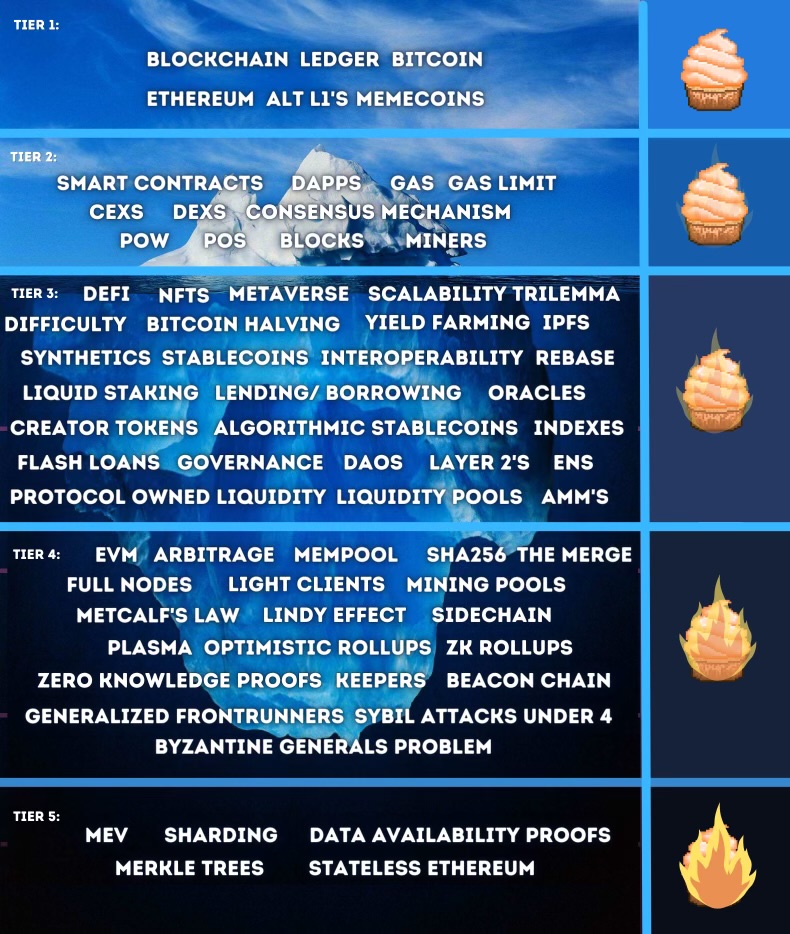
As we go deeper into the levels, the concepts get more complex, so you can gauge your crypto competence and see what areas you can level your crypto game up in right here!
Tier 1:
The first level of crypto terms that the majority of novice crypto enthusiasts would be aware of. These terms cover a broad range of subjects and are fundamental concepts to building competency in crypto.
If you’re just starting out, these terms are a great place to launch your journey through the world of cryptocurrency.
Blockchain - A digitally distributed, decentralized, public ledger that exists across a network.
Ledger - An immutable database that stores a series of blocks of transactions after being confirmed by the network.
Bitcoin - The first iteration of digital currency created by Satoshi Nakamoto.
Ethereum - A generalized platform aiming to go beyond just digital currency through the use of smart contracts and dApps.
Alt L1's - Layer 1 protocols taking alternative approaches toward solving the scalability trilemma.
Memecoins - Cryptocurrency that originates from an internet meme or has some other humorous characteristic. (Doge, Shiba Inu)
Tier 2:
The next level of crypto terms we’ll cover goes a bit deeper, but most crypto users are probably familiar with or have at least seen or heard these labels while engaging in cryptocurrency communities online or in discussions about crypto.
Once you get comfortable with the ideas in level 1, these would be the logical next step to deepen your general understanding of cryptocurrency.
Smart contracts - Programs that run when predetermined conditions are met, used to automate the execution of an agreement.
dApps - Apps that offer similar functions of normal apps, but run on a peer to peer network.
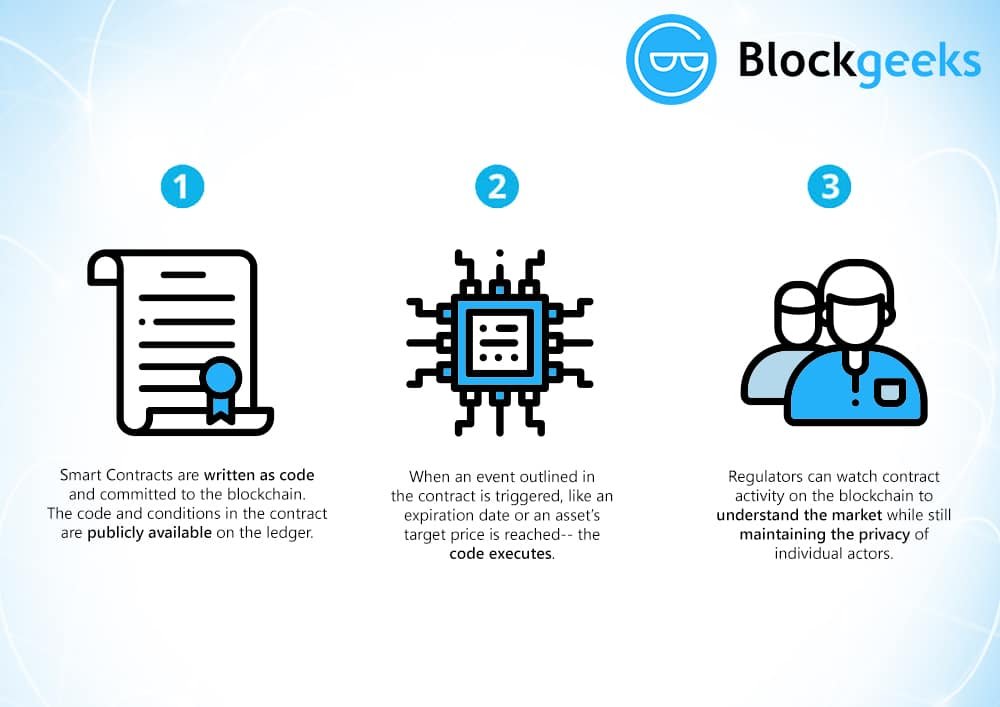
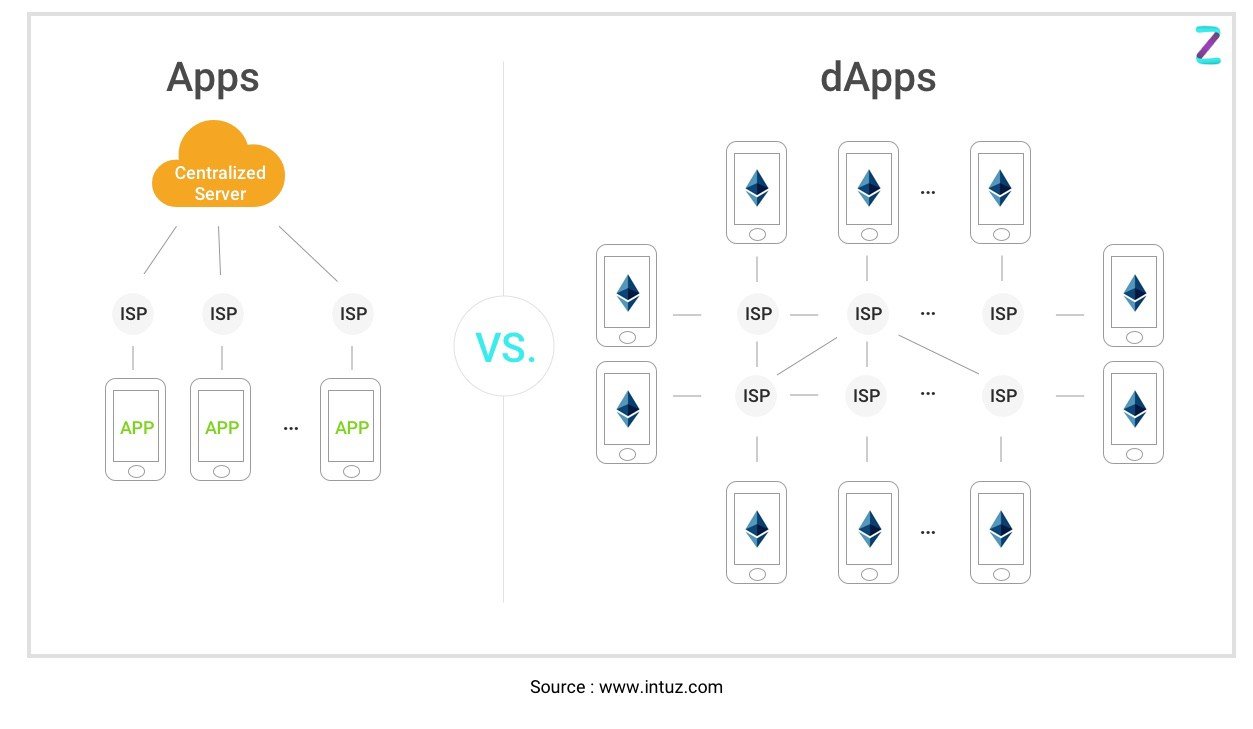
Gas - On $ETH, gas is used to describe a unit of measurement for the amount of computational power needed for executing specific operations on the network.
Gas Limit - The maximum amount of gas you're willing to spend on a particular transaction.
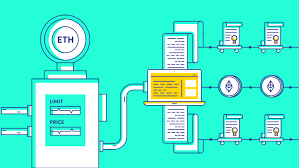
CEX’s - Exchanges that act as a trusted intermediary for the buying and selling of cryptocurrency (custodial)
DEX’s - A type of cryptocurrency exchange which allows for direct peer-to-peer cryptocurrency transactions to take place online (non-custodial).
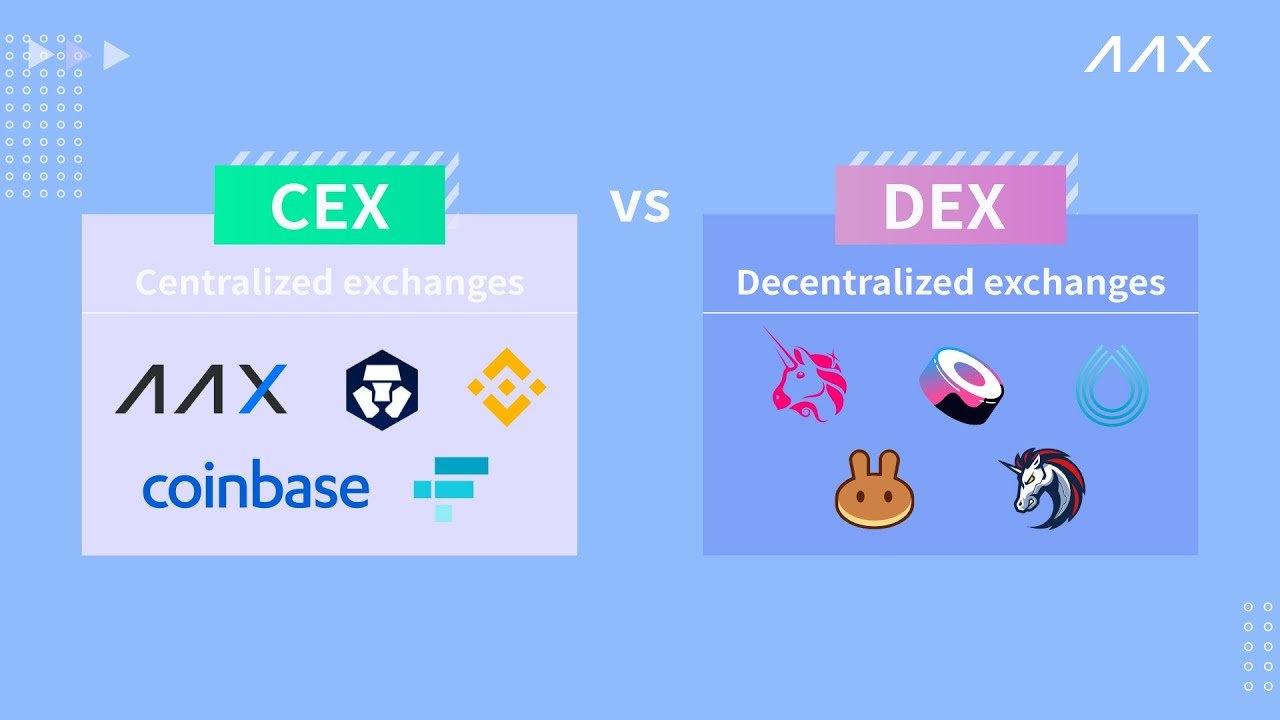
Consensus Mechanisms - A fault-tolerant mechanism used to reach an agreement on a single state of the network among distributed nodes.
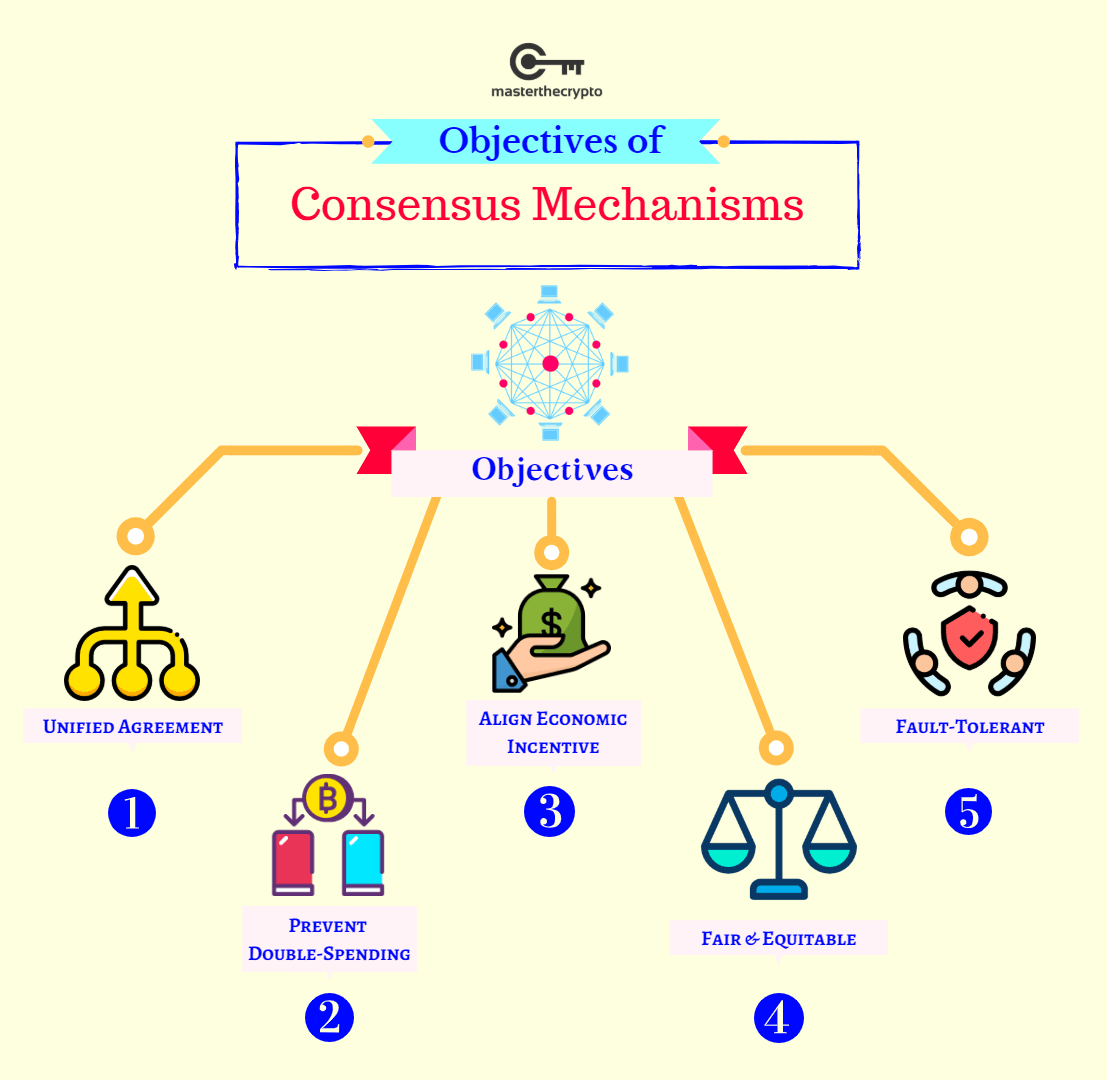
These are protocols that make sure all nodes are synchronized with each other & agree on transactions, which are then added to the blockchain.
PoW - Proof of work (PoW) is a consensus mechanism that requires members of a network, called miners, to expend effort solving an arbitrary mathematical puzzle to verify transactions and add blocks to the blockchain.
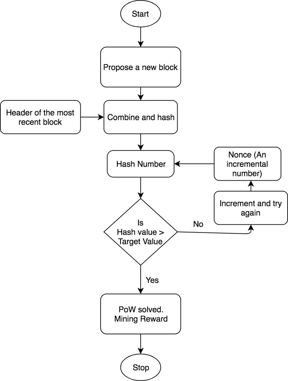
PoS - Proof of stake (PoS) is a type of consensus mechanism used by blockchain networks to achieve distributed consensus.
It requires users to stake their crypto to become a validator in the network. Validators are responsible for the same thing as miners in Proof of Work.
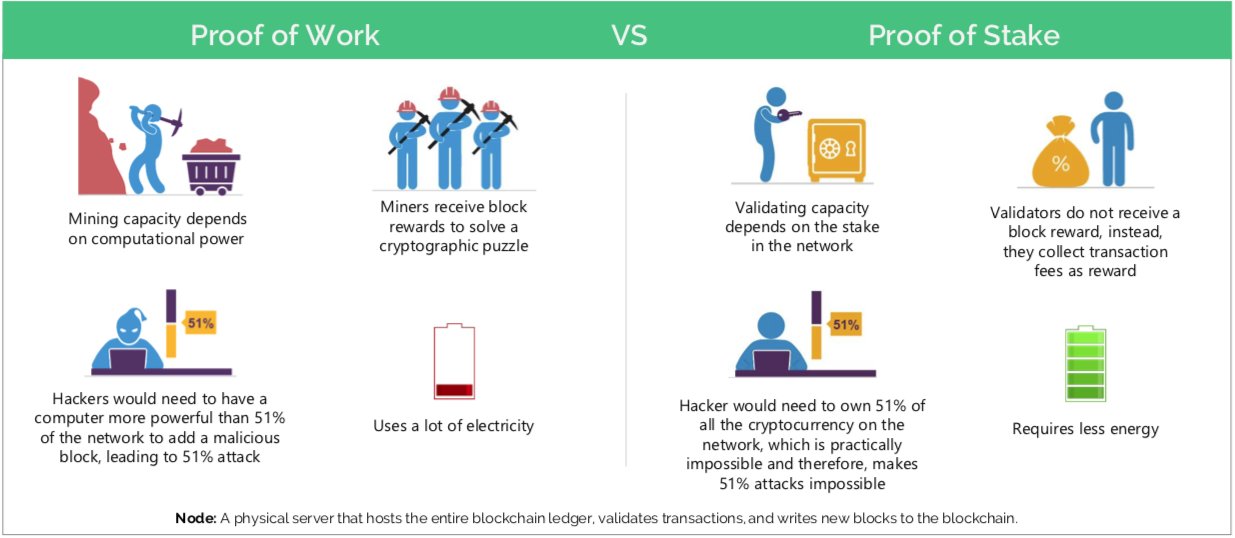
Blocks - Data structures within a blockchain, where transaction data in a cryptocurrency blockchain are permanently recorded.
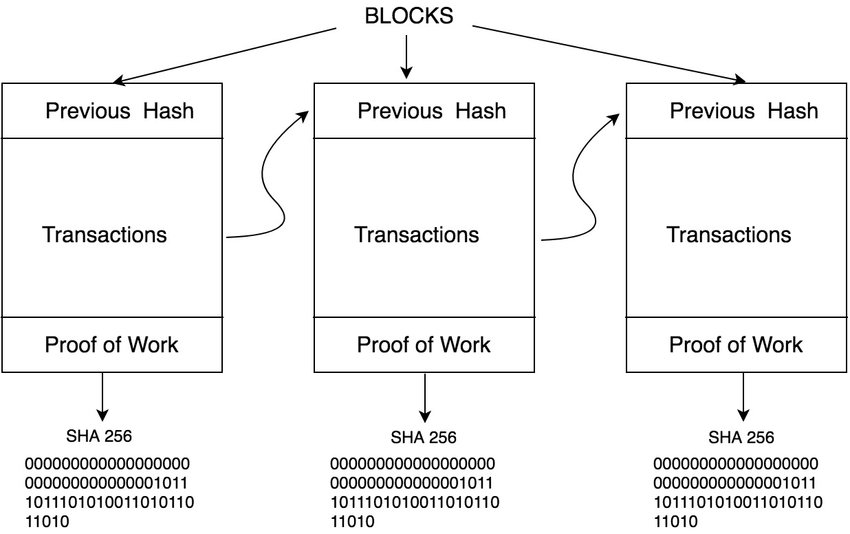
Miners - A computer or group of computers responsible for adding new transactions or verifying blocks created by other miners.
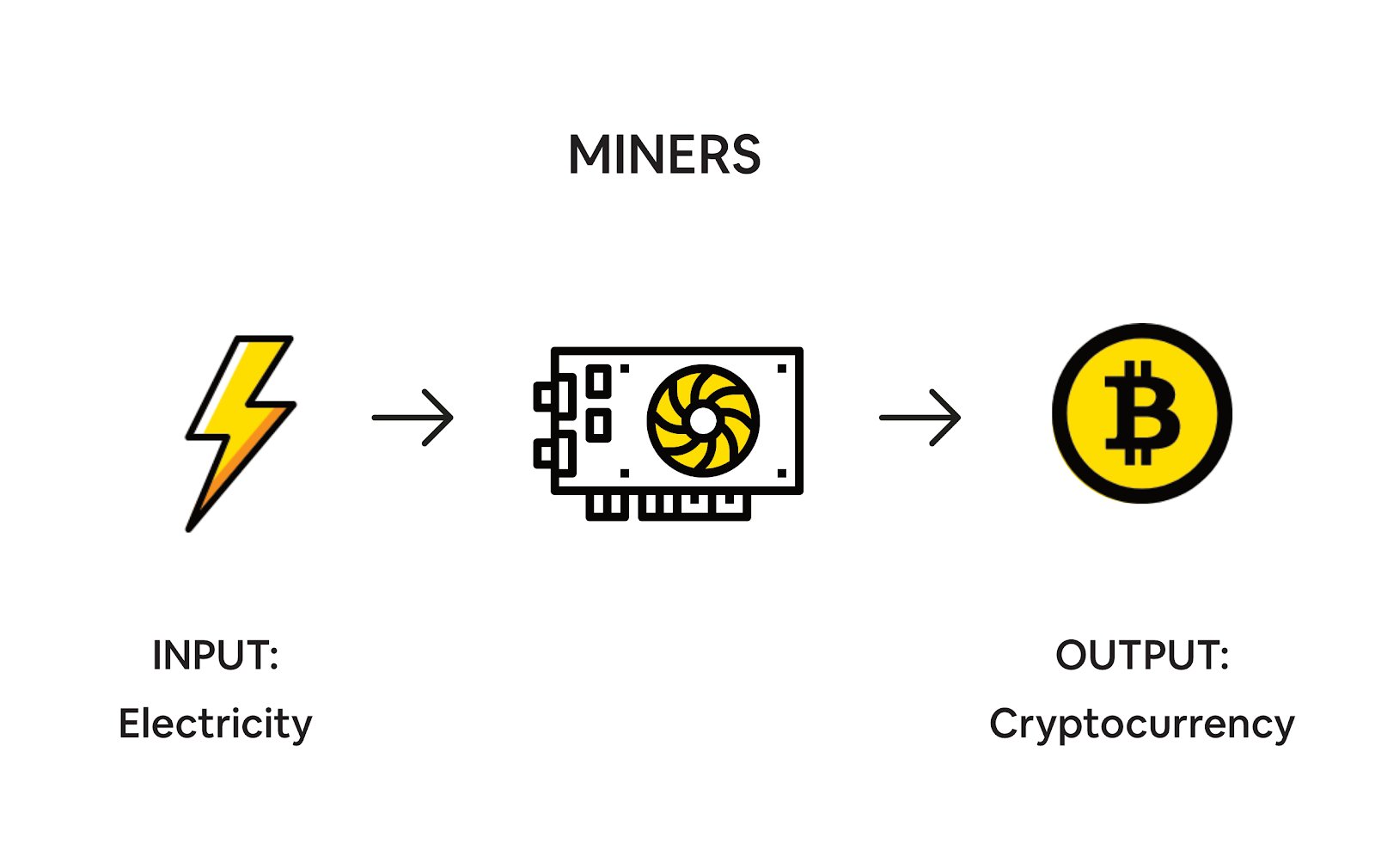
Tier 3:
We’re going deeper with level 3’s terms. These are concepts that would be understood by those who have a very strong grasp of blockchain technology. Getting familiar with these ideas would help to develop a sophisticated strategy behind blockchain dynamics and cryptocurrency investing.
DeFi - Decentralized finance offers financial instruments without relying on intermediaries such as brokerages, exchanges, or banks. Instead, it uses smart contracts on a blockchain.
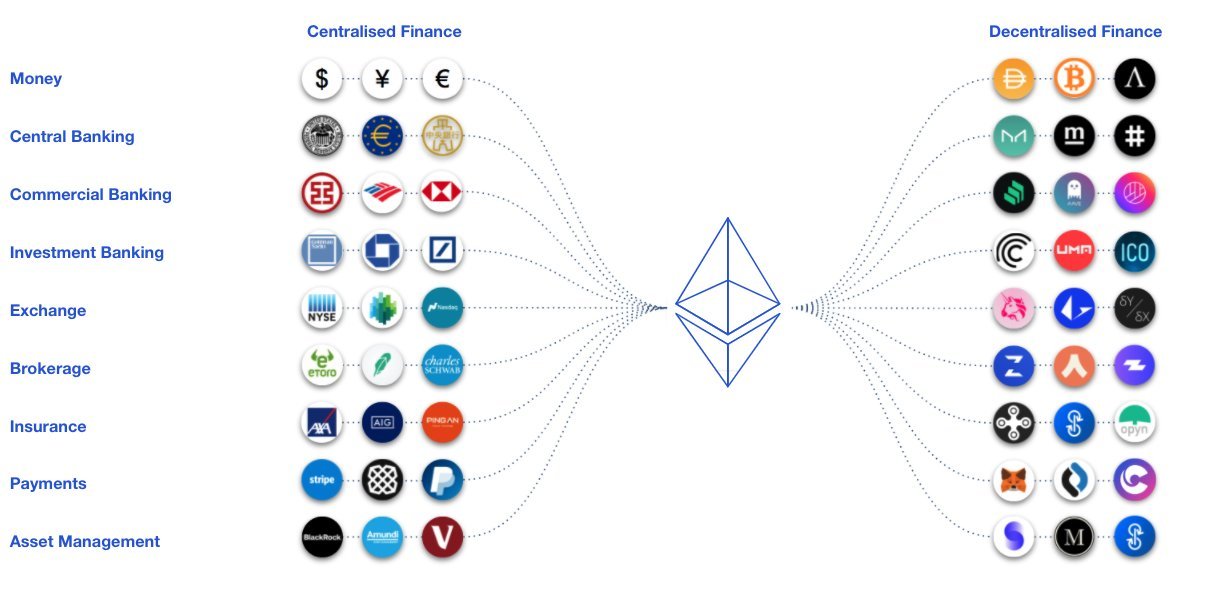
NFTs - A non-fungible-token is a non-interchangeable unit of data stored on a blockchain that can be sold or traded. Types of NFT data units can be associated with digital files such as photos, videos, and audio.
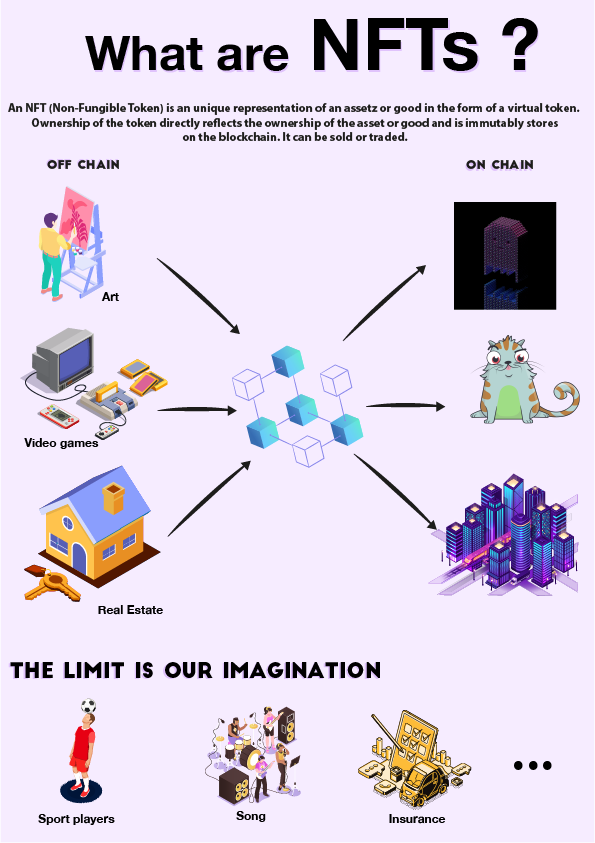
Metaverse - The Metaverse is a massively complex and interoperable network of real time rendered 3D virtual worlds which can be experienced synchronously and persistently by an unlimited amount of users.

Scalability Trilemma - The blockchain scalability trilemma, coined by Vitalik Buterin, states that trade-offs are inevitable between three components: decentralization, security, and scalability.
You can have one or two, but not all three.
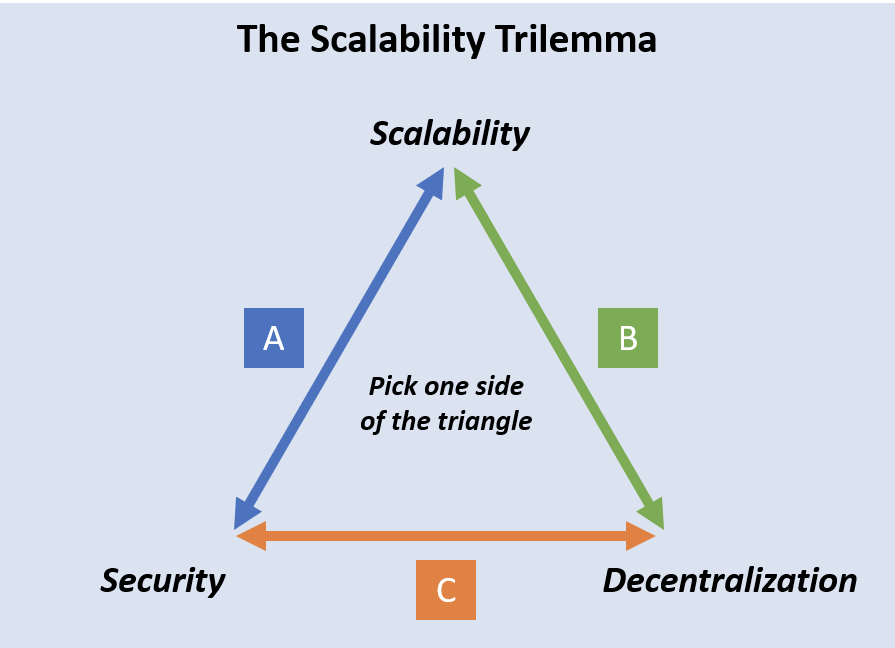
Difficulty - Difficulty is one of the most important aspects of Proof of Work mining. It is derived using the network hash rate and determines the speed at which miners are able to validate an encrypted block.
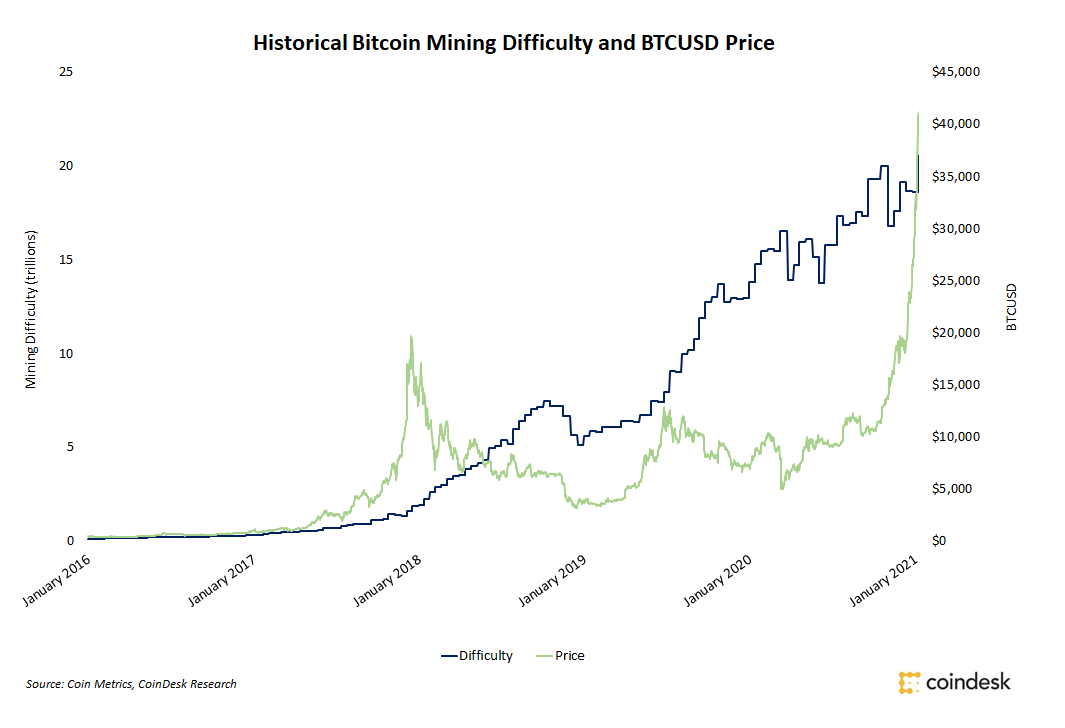
Bitcoin Halving - Every 4 years, $BTC undergoes a "halving" event, which cuts the amount of $BTC coming into supply in half via block rewards to miners, and aims to tighten the issuance of supply until all 21m $BTC is mined.
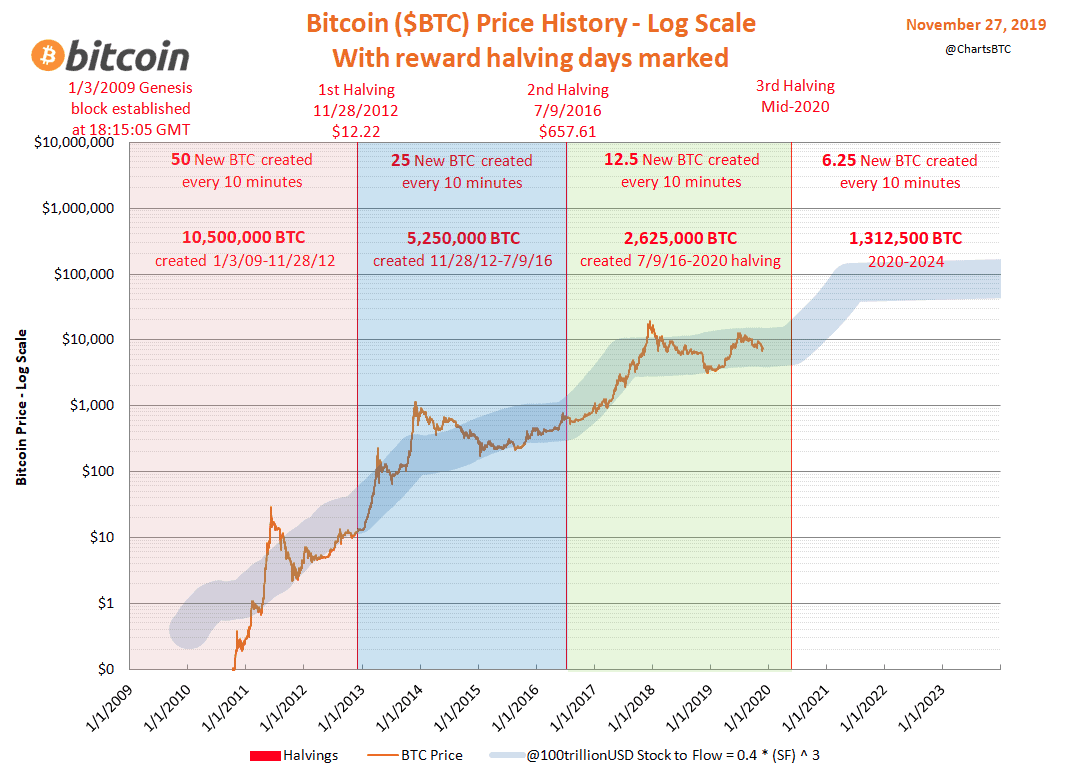
Layer 2s - Layer 2 refers to a secondary framework or protocol built on top of an existing blockchain system.
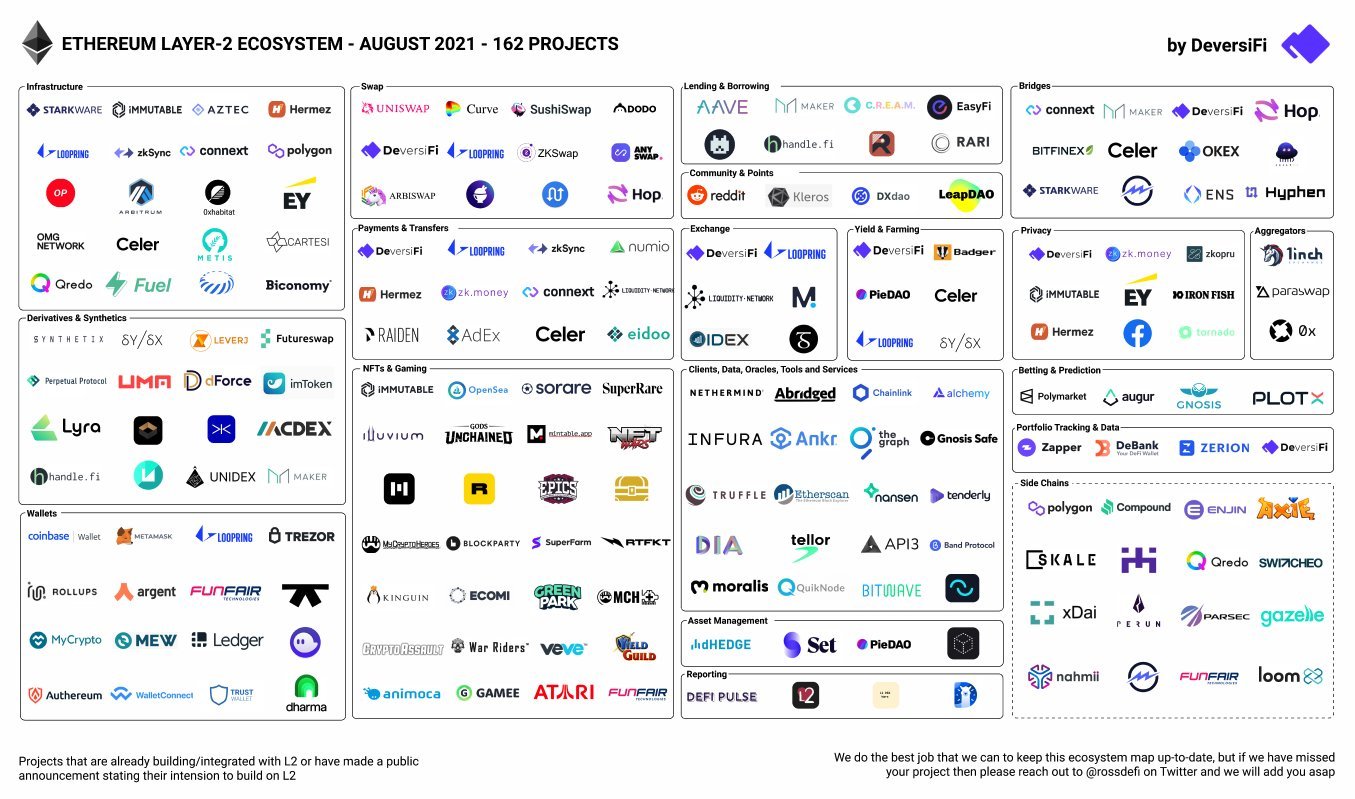
The main goal of these protocols is to solve the transaction speed and scaling difficulties being faced by the major cryptocurrency networks.
Yield Farming - The crypto equivalent of earning APY on deposits with banks.
At its core, yield farming is a process in which liquidity providers lock up their assets in a liquidity pool, & receive incentives in the form of trading fees or emissions of a governance token.
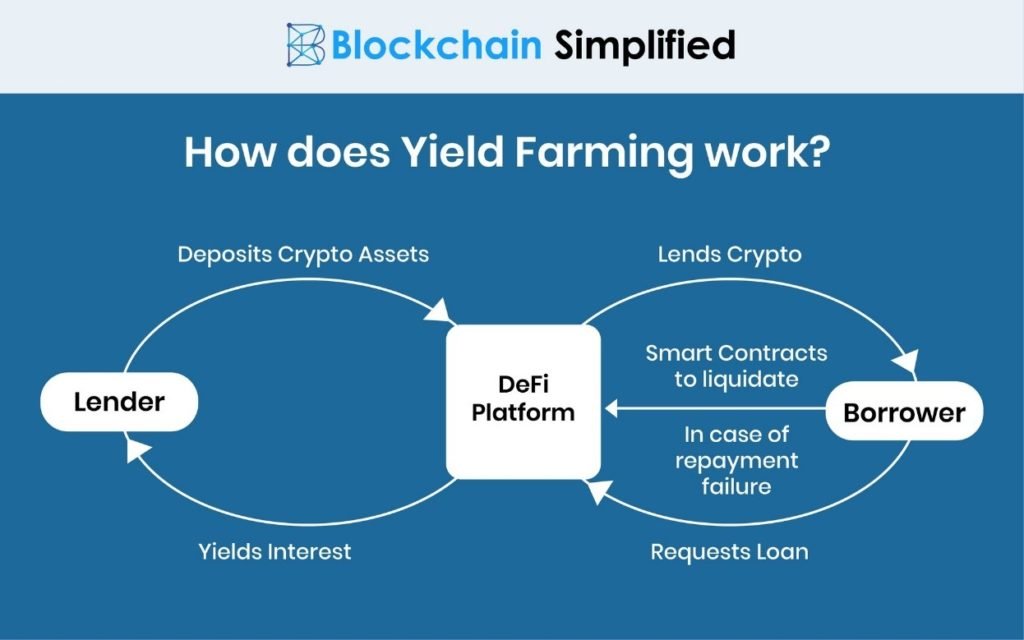
AMMs - An AMM (Automated Market Maker) is the underlying protocol that powers DEX's.
AMMs allow assets to be traded permissionlessly through the use of liquidity pools, instead of a traditional market of buyers and sellers.
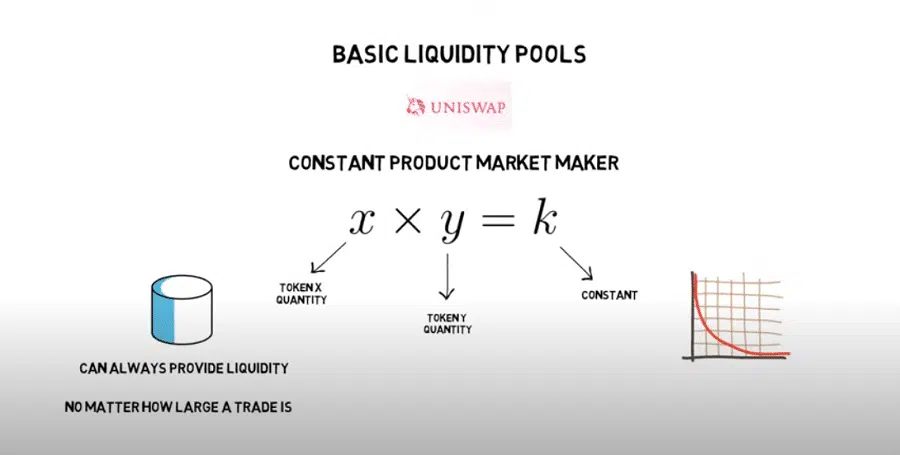
Liquidity Pool - A liquidity pool is a crowdsourced pool of cryptocurrencies or tokens locked in a smart contract that facilitate trades on decentralized exchanges.
Trading with liquidity pool protocols like Uniswap requires no buyer and seller matching for orders to go through.
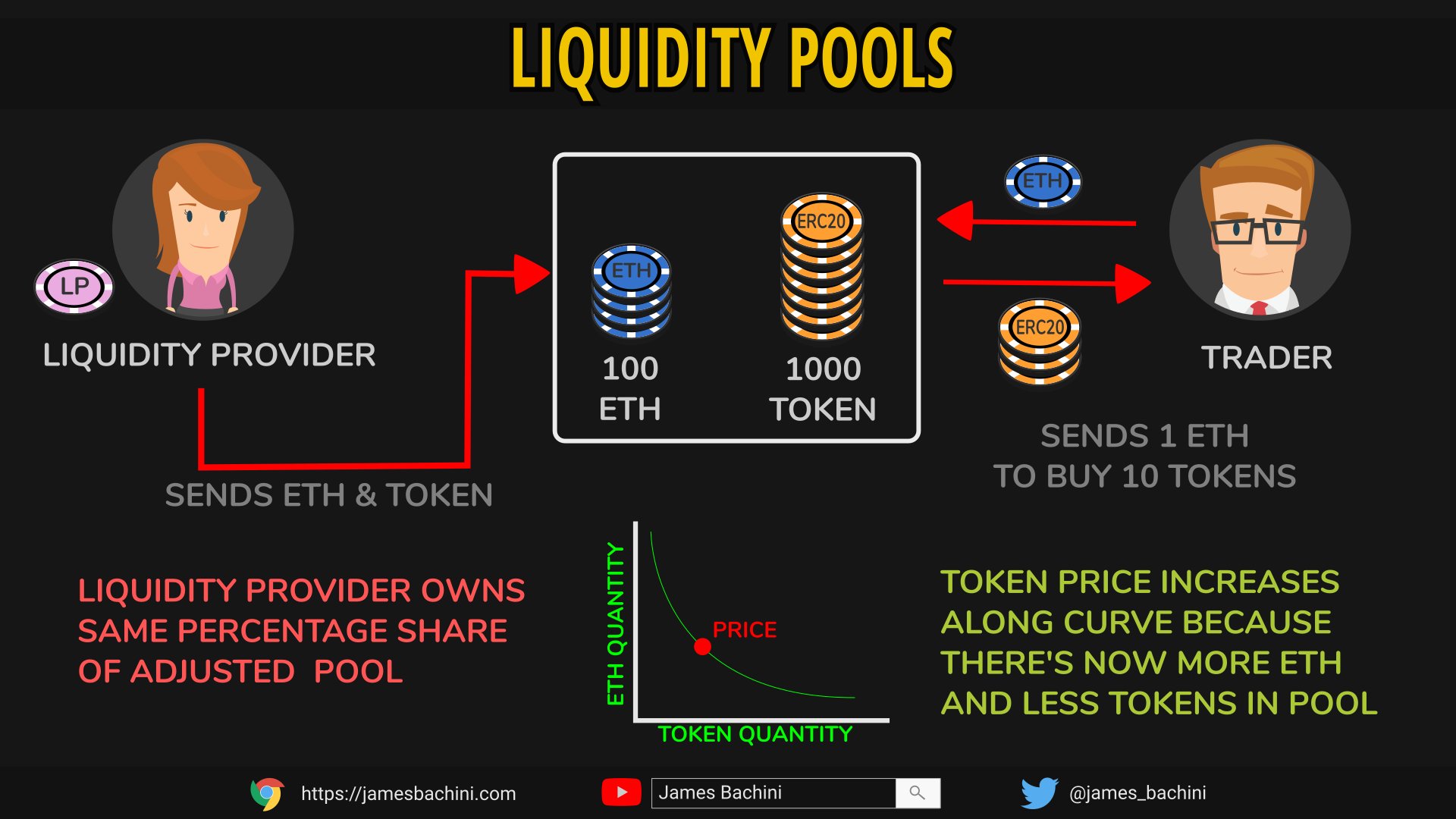
Lending/Borrowing - Crypto lending is similar to the concept of traditional lending.
Crypto lenders are able to lend out their idle assets to borrowers, who in turn pay out interest on the lender assets.
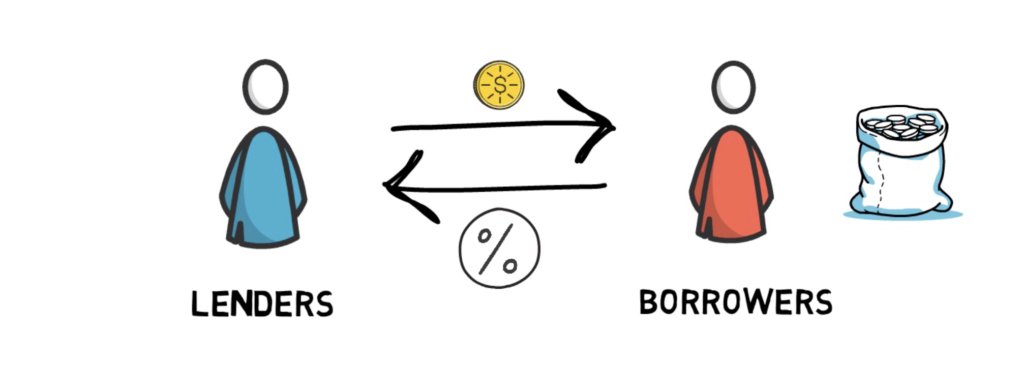
Synthetics - Synthetic assets are essentially tokenized derivatives. In TradFi, derivatives are representations of stocks or bonds that a trader does not own but wants to buy or sell.
Synthetics assets allow investors to tokenize and trade anything on the blockchain.
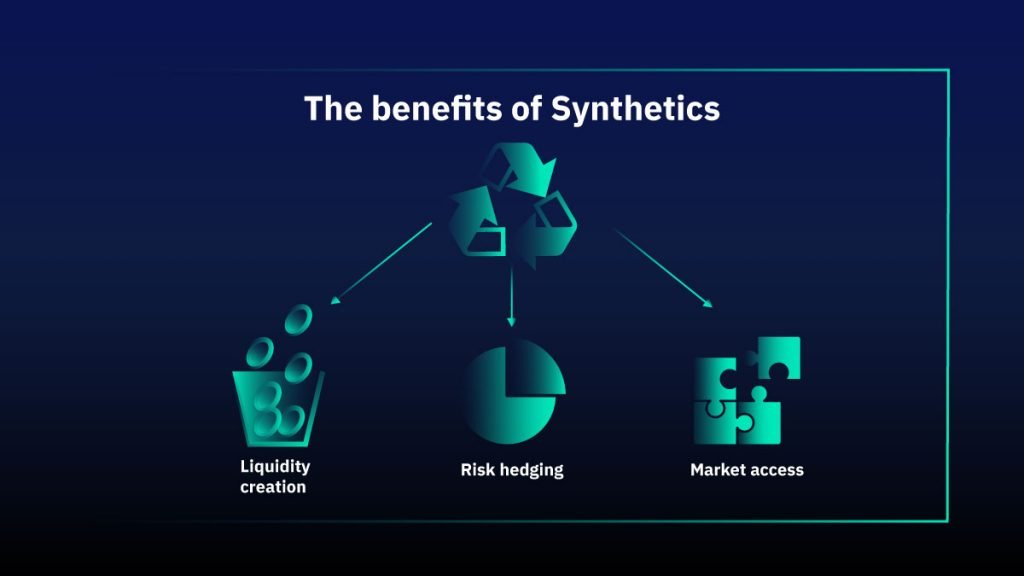
Indexes - A crypto index is a way of gaining exposure to a basket of different crypto assets. Each index is composed of a variety of different crypto assets.
These indexes allow investors to gain exposure to a wide variety of tokens without having to buy each one individually.
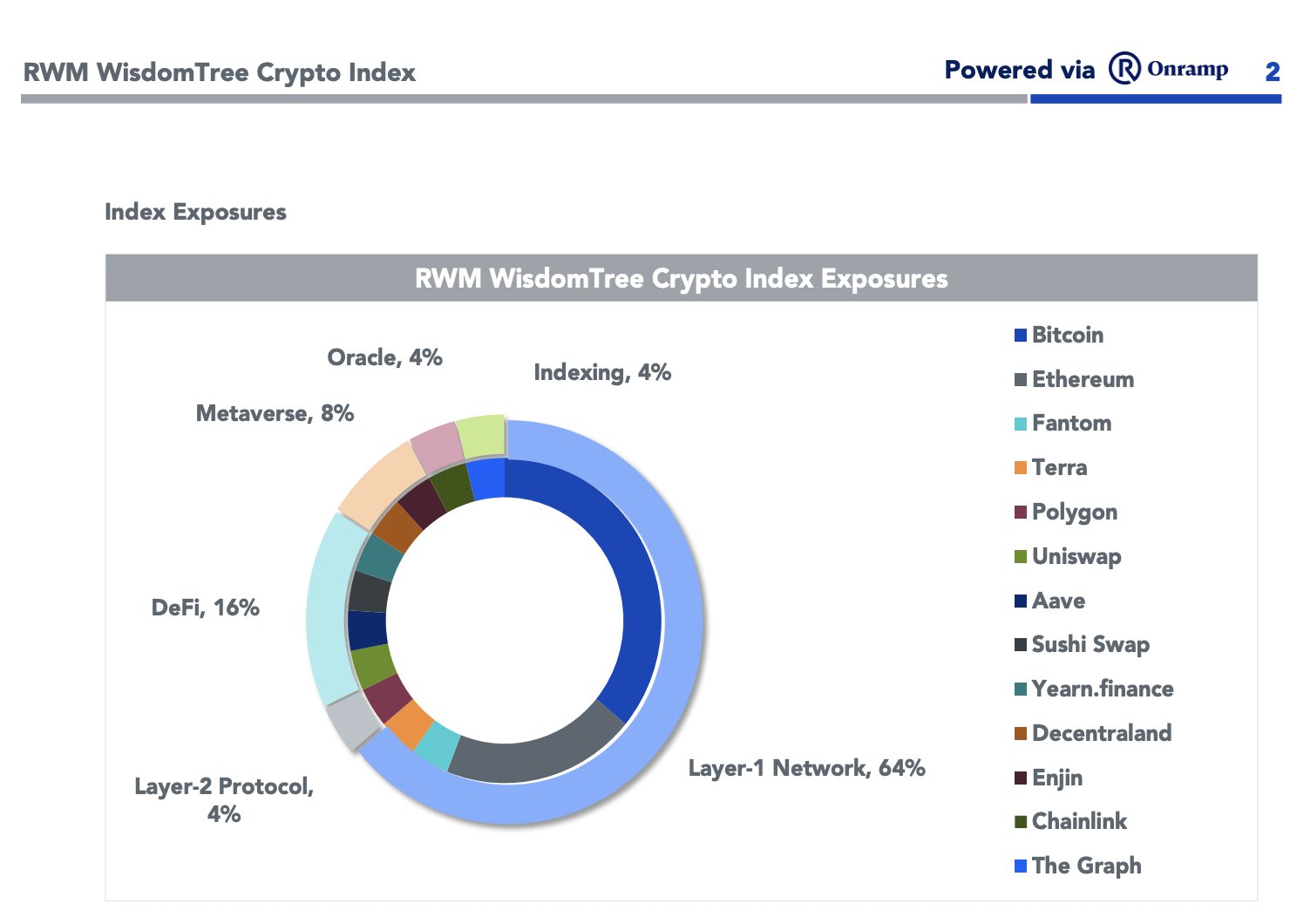
Oracles - Blockchain oracles are entities that connect blockchains to external systems, thereby enabling smart contracts to execute based upon inputs and outputs from the real world.
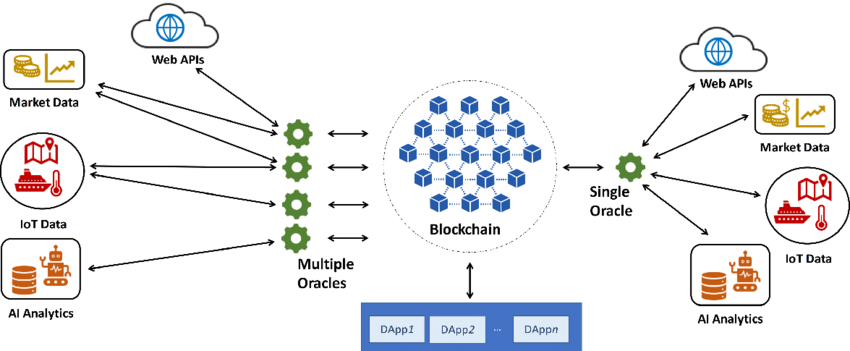
Governance - In the absence of a central authority, decentralized networks rely on governance structures for their projects.
Blockchain governance typically employs mechanisms to make decisions on project direction, on-going updates, and to make sure everything runs efficiently.
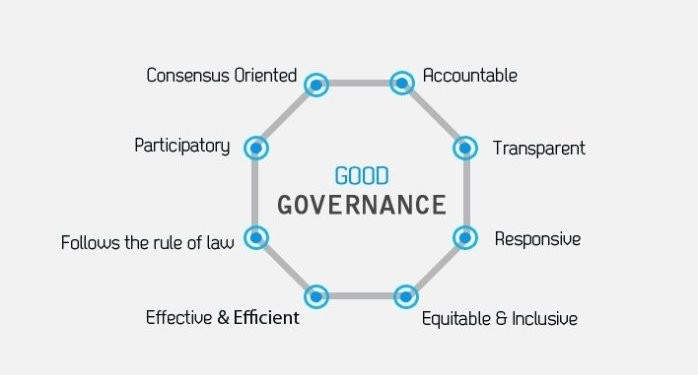
Stablecoins - Cryptocurrencies where the price is designed to be pegged to a cryptocurrency, fiat money, or exchange-traded commodities.
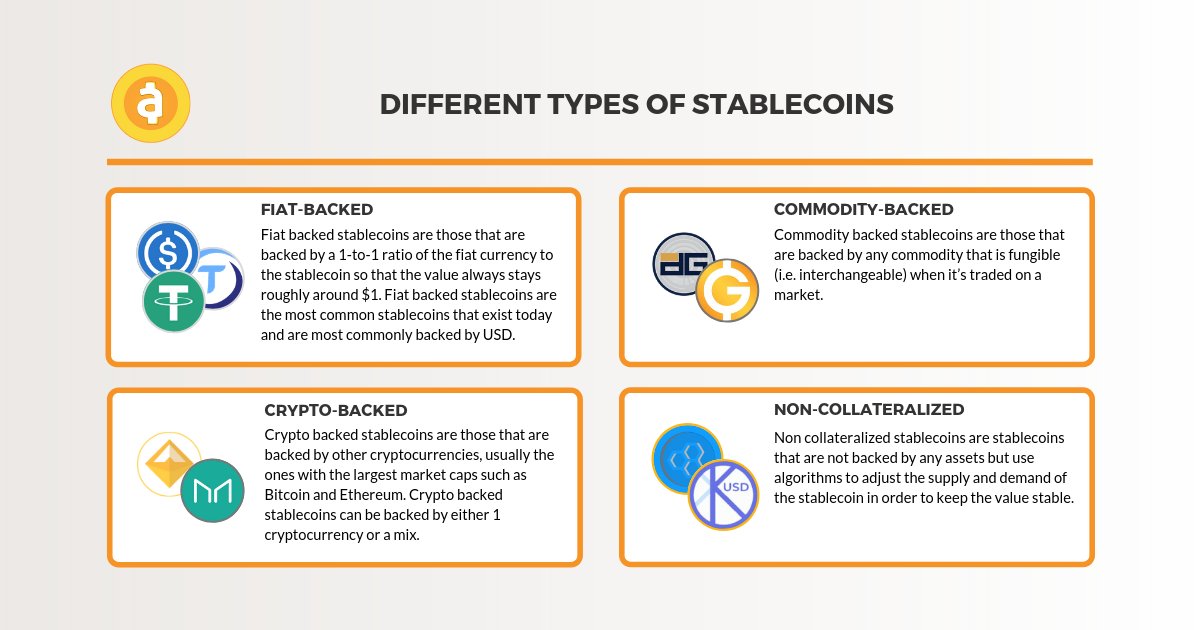
Algo Stablecoins - An algorithmic stablecoin is designed to achieve price stability & circulating supply of an asset.
In other words, algo stablecoins use an algorithm which can issue more coins when its price increases and buy them off the market when the price decreases.
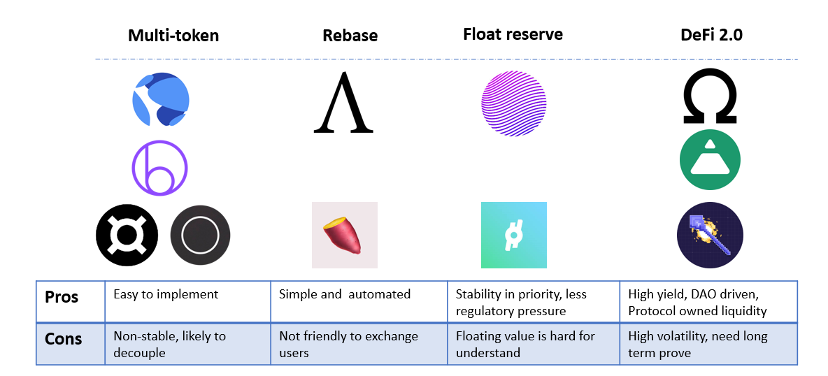
Flash Loans - A flash loan is a new sort of undercollateralized lending.
Flash loans enable users to take out near instant crypto loans without having to provide collateral in return.
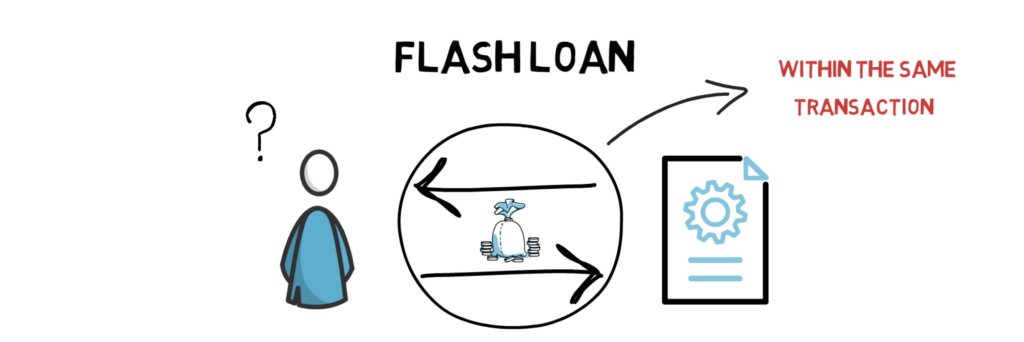
Arbitrage - Crypto arbitrage is a type of trading strategy where investors capitalize on slight price discrepancies of a digital asset across multiple markets or exchanges.
Ex. Buying an asset on one exchange and selling it instantly on an exchange where price is higher.
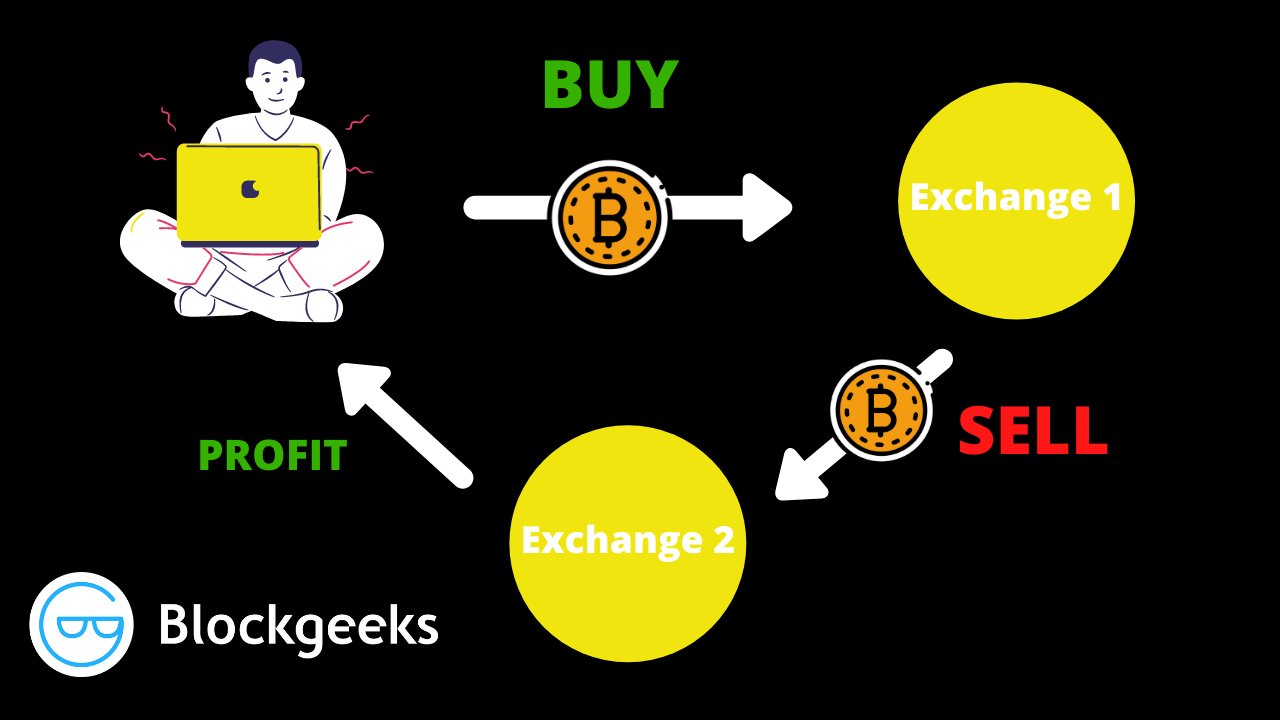
Rebase - A rebasing token is an elastic supply smart contract that works by expanding or contracting a token's supply due to change in a token's price.
Creator Tokens - Creator tokens are social tokens that allows creators, influencers, athletes, musicians and more to launch their own cryptocurrencies to monetize and multiply their audience.
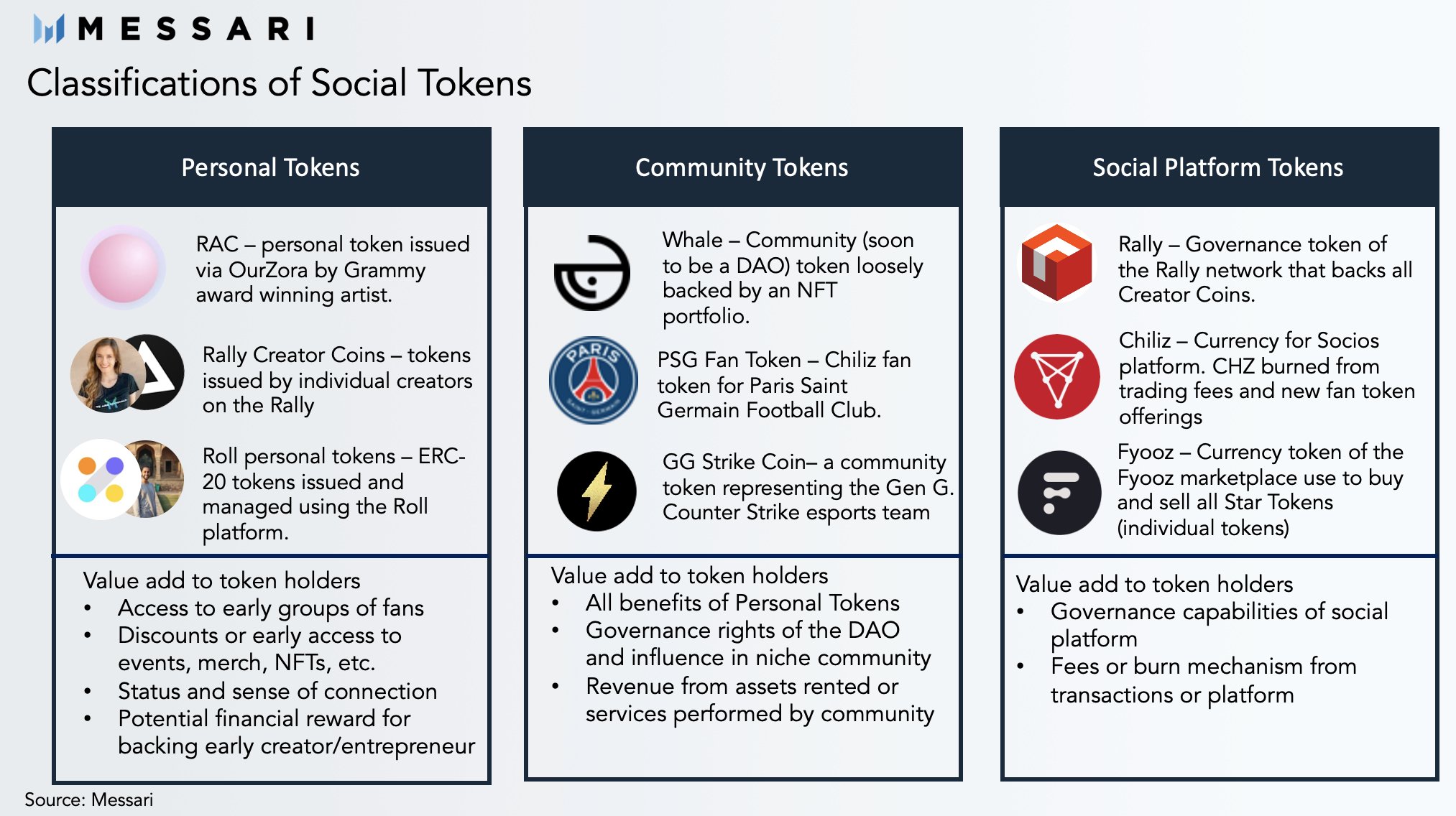
Protocol Owned Liquidity - PoL is a new approach toward providing liquidity pioneered by Olympus DAO.
Instead of relying on incentives for LPs, the protocol sells discounted tokens to buyers who in exchange provide another token which then forms part of the protocol's treasury.
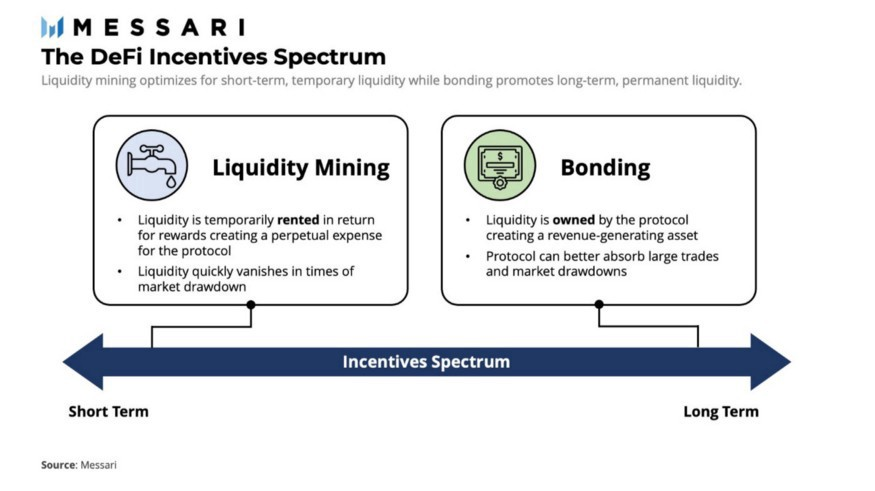
Liquid Staking - Liquid staking allows holders of tokens to stake their assets & receive a derivative or liquid representation of that asset that can be used in dApps.
Using liquid staking, ETH 2.0 stakers are able to simultaneously stake their Ethereum while remaining liquid.
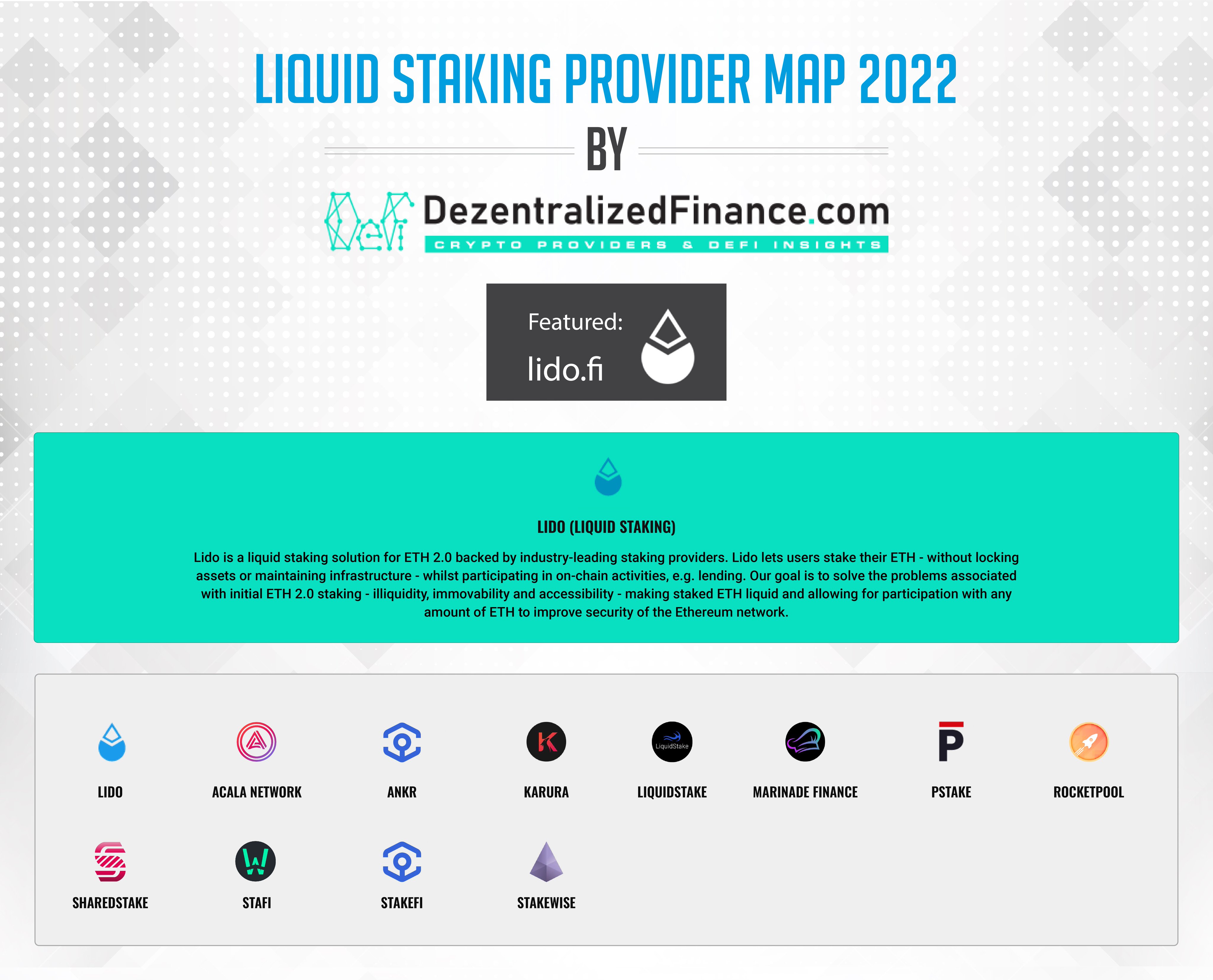
DAOs - A decentralized autonomous organization is an organization represented by rules encoded as a computer program that is transparent, controlled by the organizations members and not influenced by a central government.
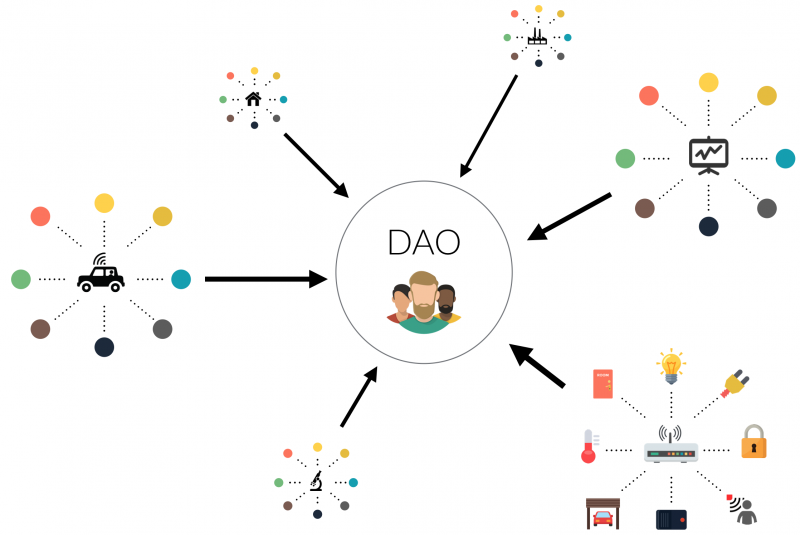
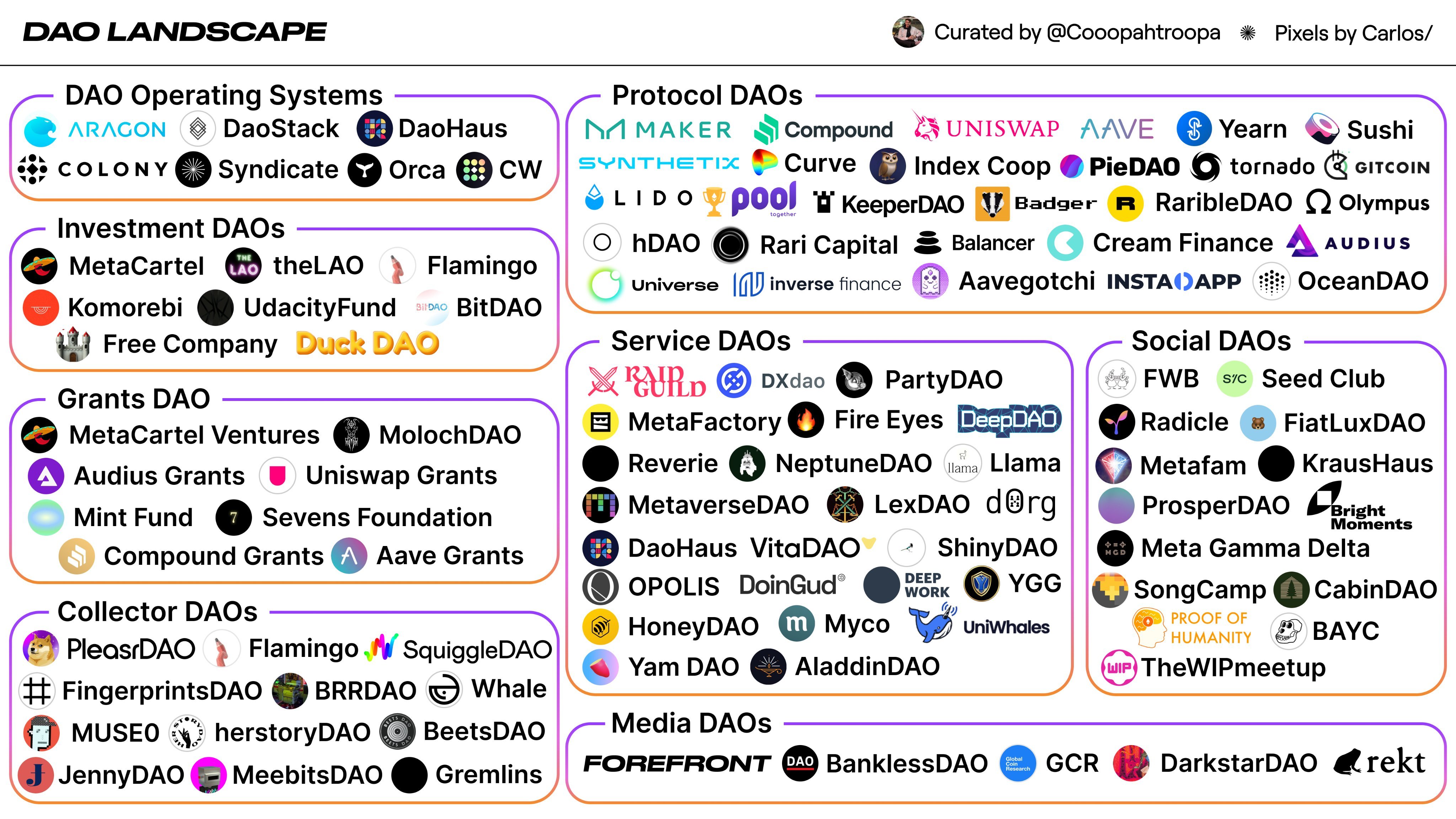
Interoperability - Blockchain interoperability refers to the ability of different blockchain networks to exchange and leverage data between one another to move unique types of digital assets between the networks' respective blockchains.
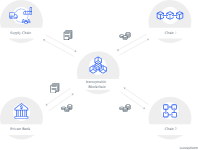
IPFS - The InterPlanetary File System is a protocol and peer to peer network for storing and sharing data in a distributed file system.
IPFS uses content addressing to uniquely identify each file in a global namespace connecting all computing devices.
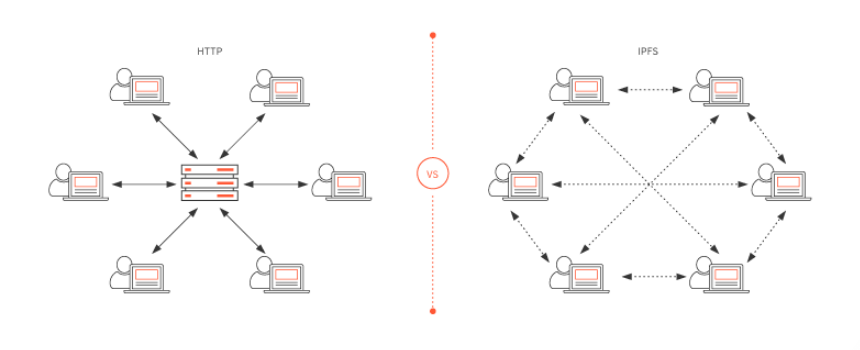
ENS - The Ethereum Name Service is a name lookup service built on $ETH that allows crypto users to translate their machine-readable addresses to human-readable addresses.
You can think of it as a nickname generator for public Ethereum addresses.
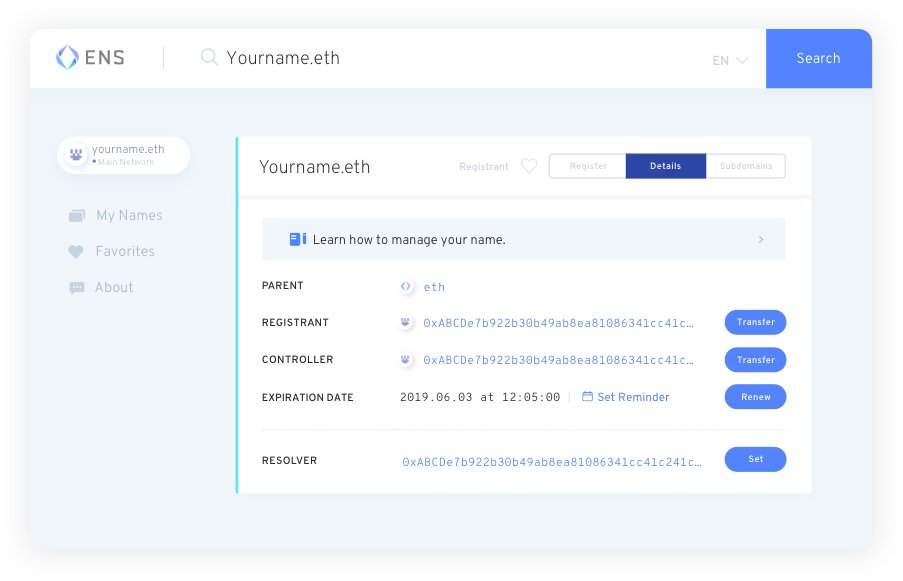
Tier 4:
Level four takes a plunge into the depths of blockchain and crypto terminology. These ideas and phrases are understood by high-level crypto players and understanding them would give you access to a comprehension of blockchain technology beyond what most people know.
We're now diving deep into the rabbit hole.
EVM - The Ethereum Virtual Machine (EVM) is the software platform that developers can use to create dApps on ETH.
The EVM is where all ETH accounts and smart contracts live, as well as the entire state history of Ethereum.
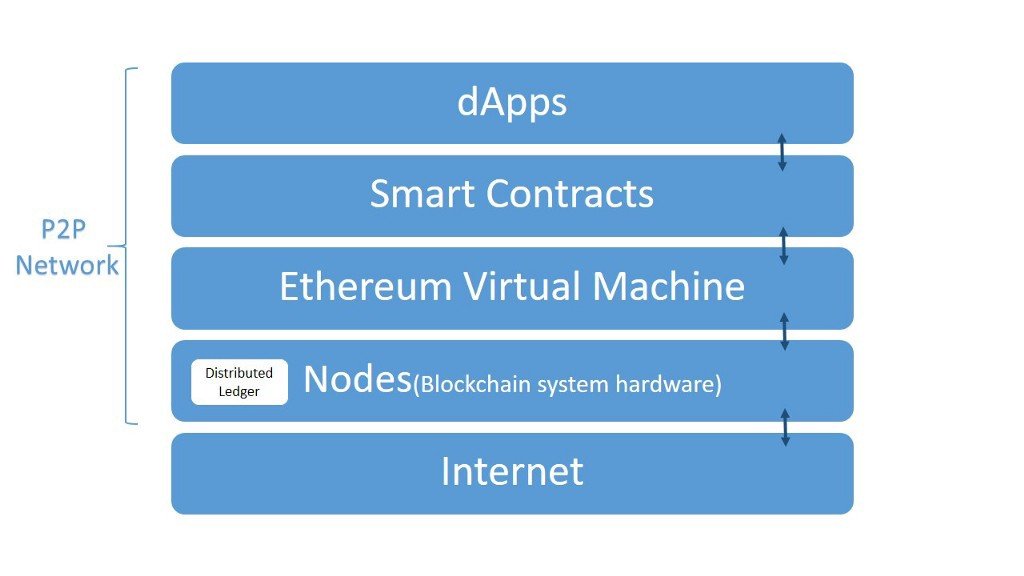
Mempool - In blockchain terminology, a mempool is a waiting area for the transactions that haven't been added to a block and are still unconfirmed.

Generalized Frontrunners - A generalized front runner is a bot on Ethereum that constantly scans the mempool for profitable transactions.
Generalized front runners participate in Priority Gas Auctions (PGAs) with other bots in order to obtain priority of their txs in a block.
Byzantine General's Problem - The Byzantine General's problem refers to the ability of a server to inconsistently appear both failed and functioning, presenting different symptoms to different observers.
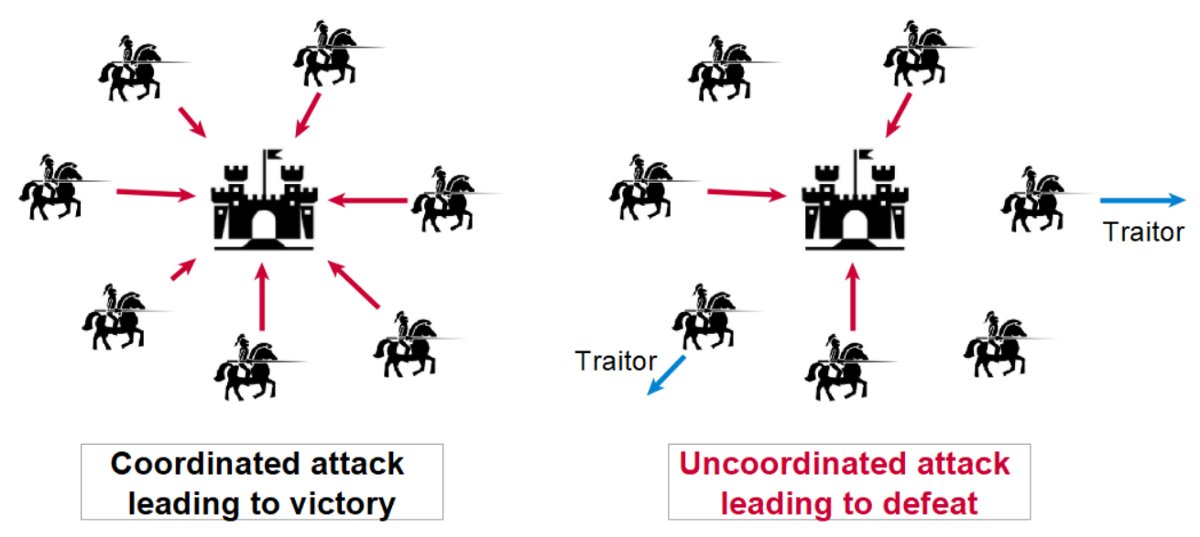
Sybil Attack - A Sybil attack is a type of attack on a computer in which an attacker subverts the service's reputation system by creating a large number of pseudonymous identities and using them to gain a disproportionally large influence.
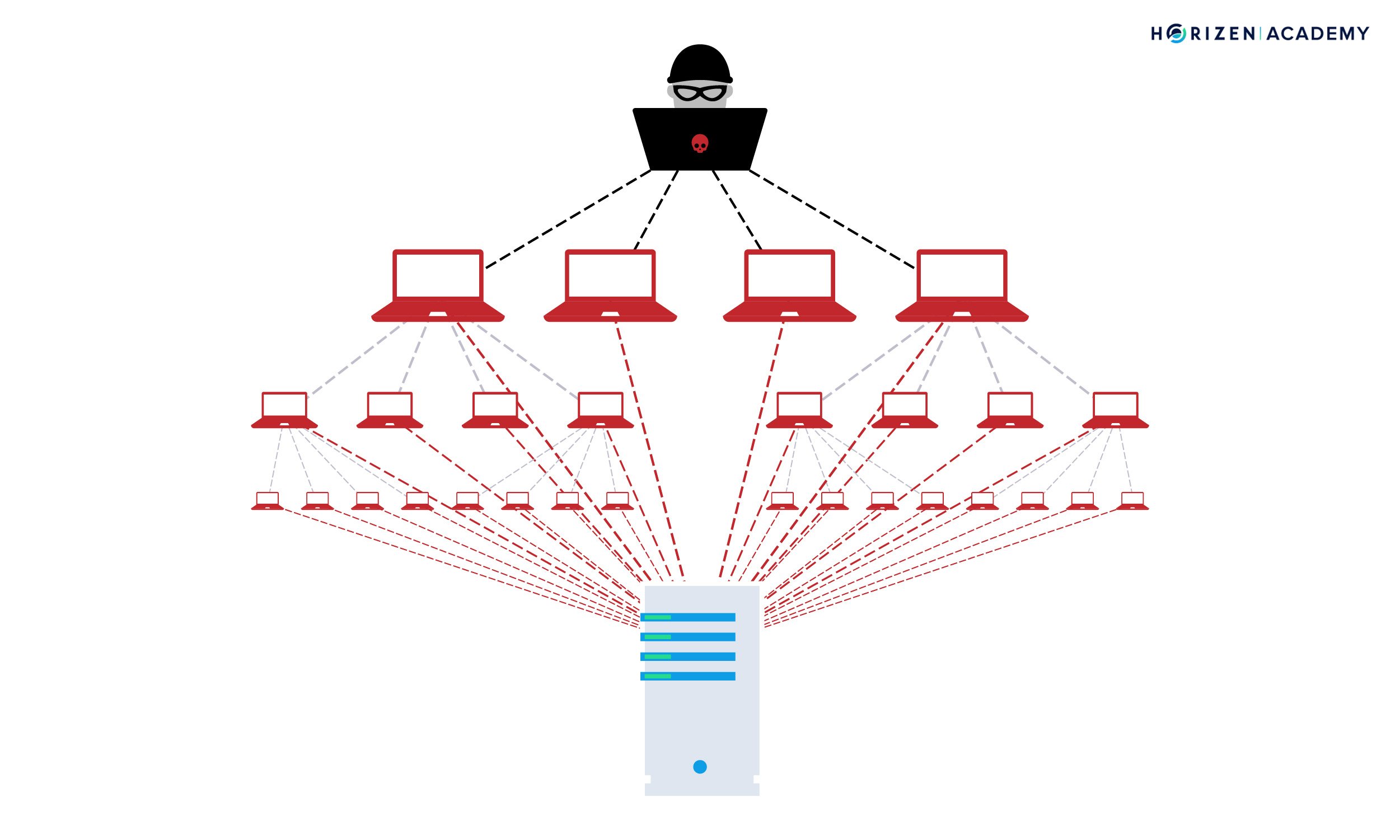
SHA-265 - SHA-256 stands for Secure Hashing Algorithm 256-bit and is used for cryptographic security.
Cryptographic hash algorithms produce irreversible and unique hashes. The larger the number of possible hashes, the smaller the chance that two values will create the same hash.
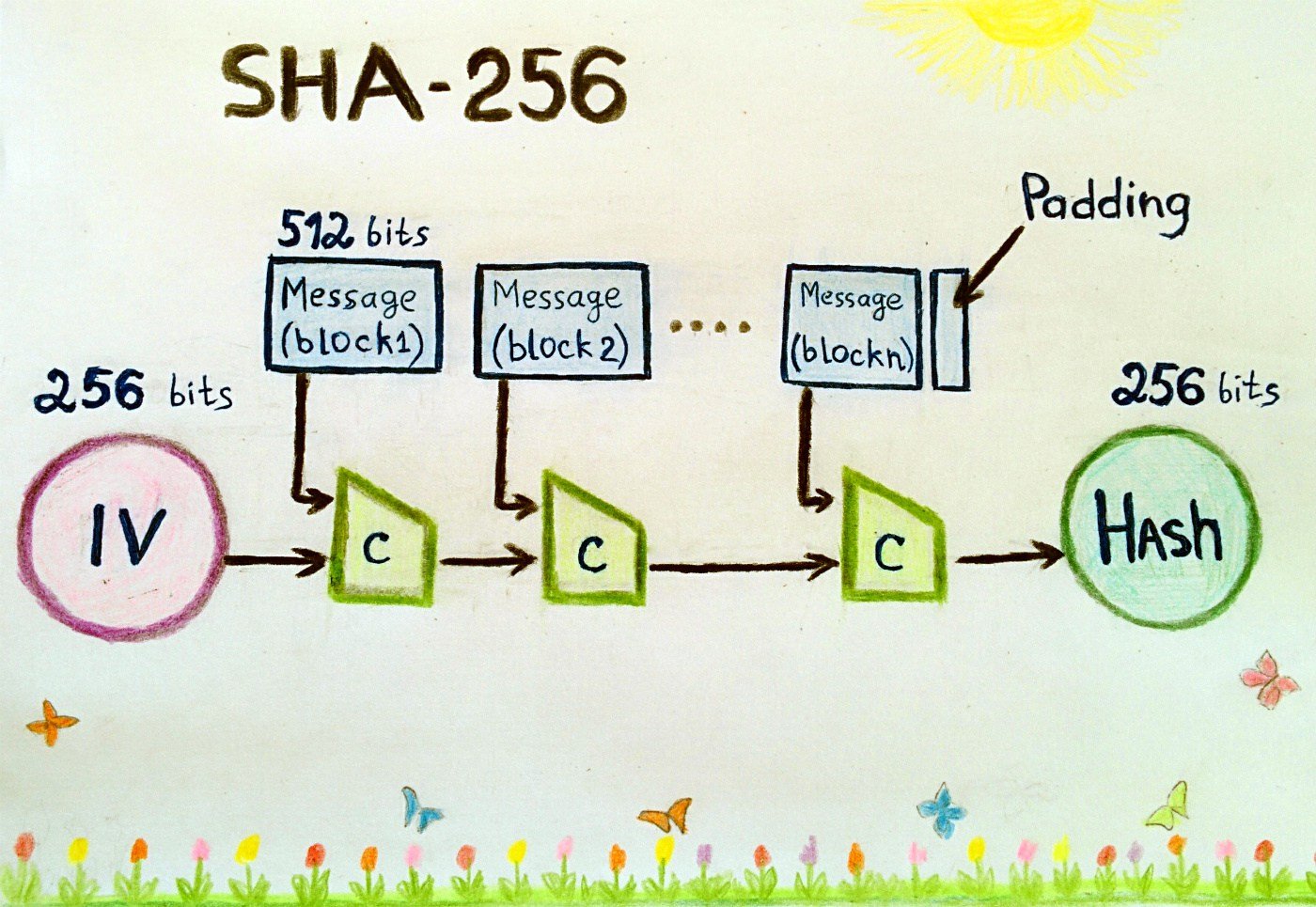
Full Nodes - Full nodes are nodes that download and check that every transaction in a blockchain is valid.
This requires a lot of resources and hundreds of gigabytes of disk space, but are the most secure nodes as they can't be tricked into accepting blocks that have invalid txs.
Light Clients - If your computer doesn't have enough resources to run a full node, then you can run a light client.
A light client doesn't download or validate any transactions, they only validate the block header, and assume that the block only contains valid txs.
Mining Pools - In the context of cryptocurrency mining, a mining pool is the pooling of resources by miners, who share their processing power over a network, to split the reward equally, according to the amount of work they contributed to the probability of finding a block.
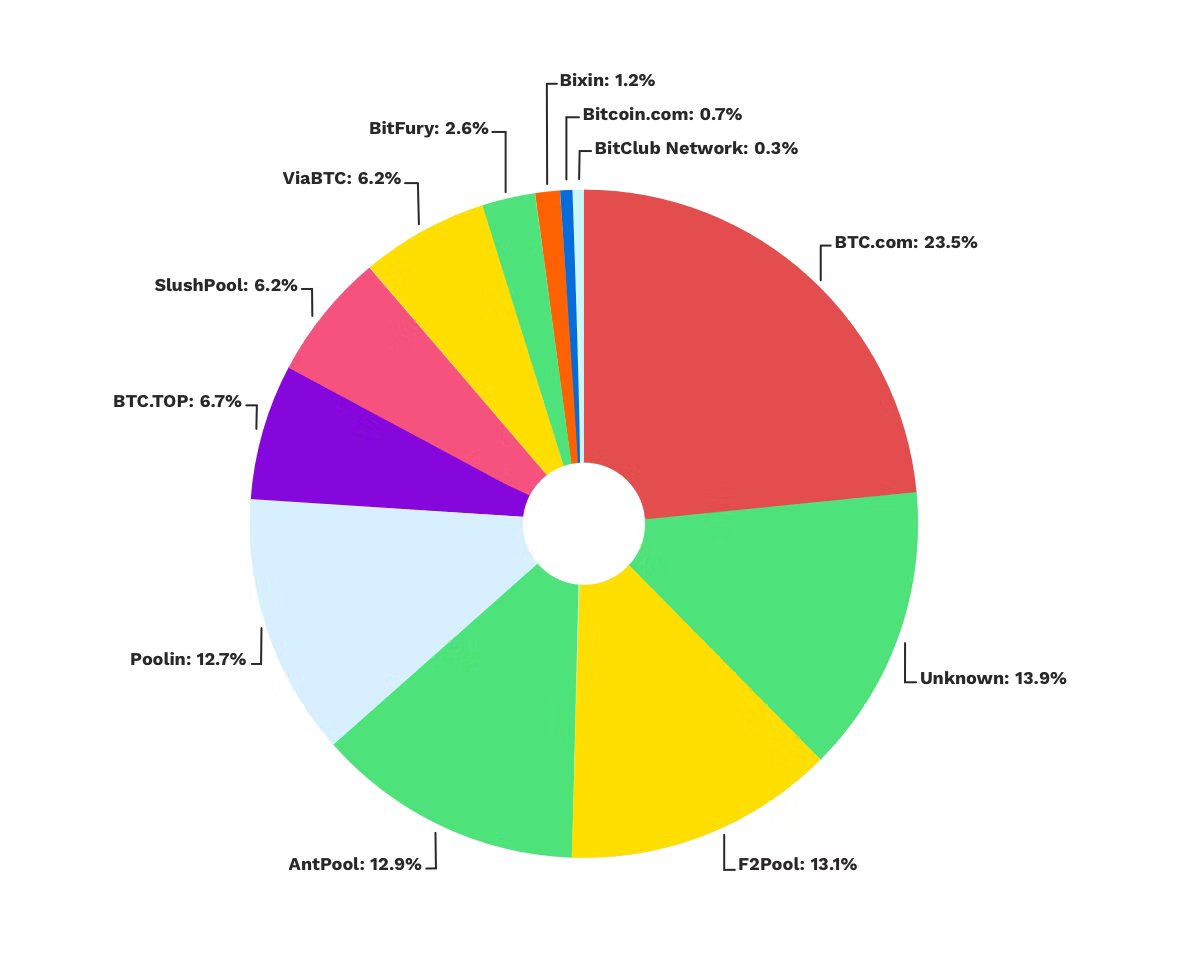
Metcalf's Law - Metcalf's law states that a network's value is proportional to the square of the number of nodes in a network.
For example, if a network has 10 nodes, its inherent value is 100 (10x10=100).
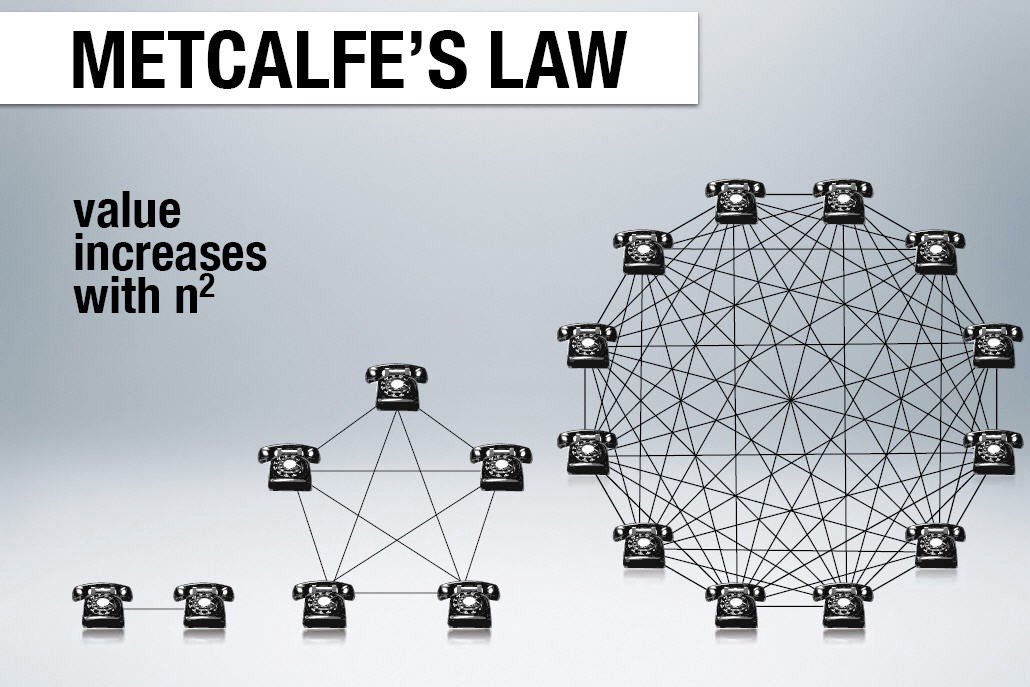
Lindy Effect - the Lindy Effect is a theorized phenomenon by which the future life expectancy of some non-perishable things, like a technology or an age, is proportional to their current age.
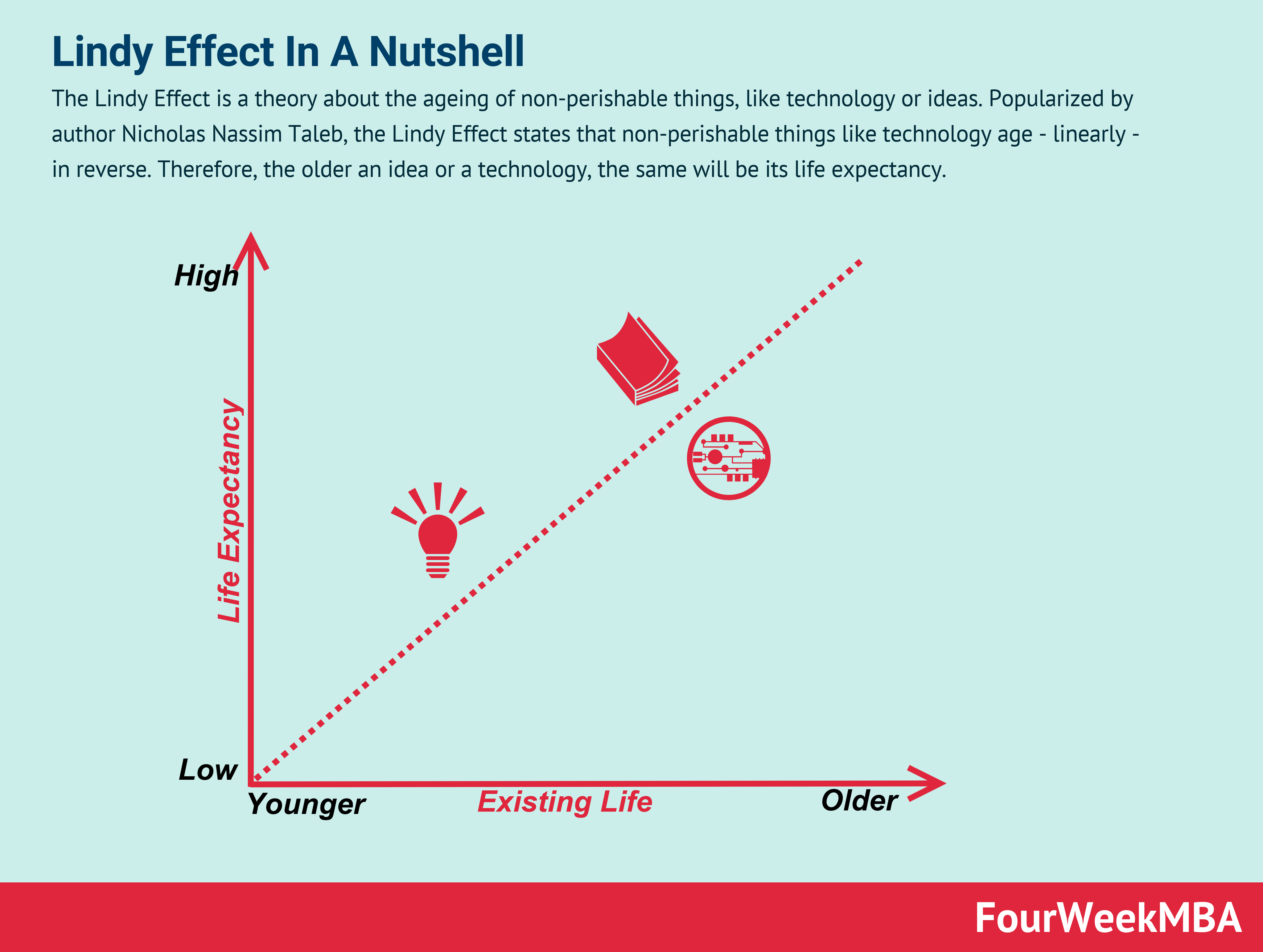
Sidechain - A sidechain is a separate blockchain that is attached to its parent blockchain using a two way peg.
The two way peg enables interchangeability of assets at a predetermined rate between the parent blockchain and the sidechain.
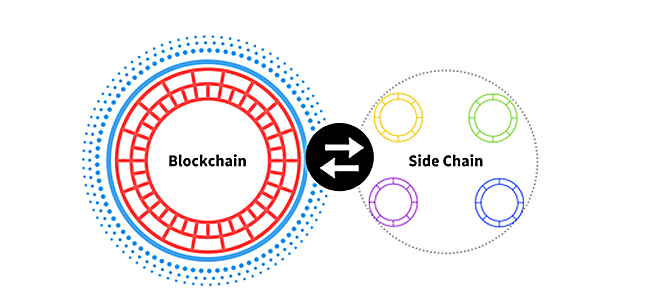
Plasma - Plasma is an Ethereum layer 2 scaling solution. It is a framework that allows the creation of "child" blockchains that use the main $ETH chain as a trust and arbitration layer.
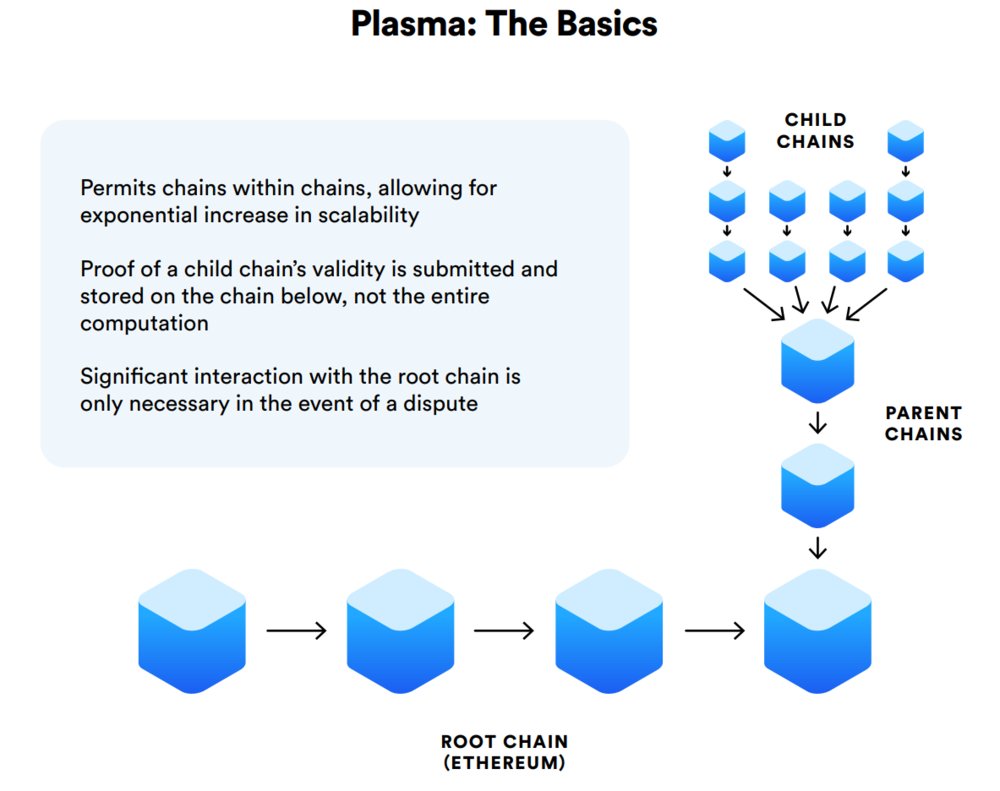
Optimistic Rollups - Optimistic rollups use a smart contract to relay transaction data from the main $ETH chain to a layer 2 network, where a sequencer can bundle up multiple txs into a batch then submit that batch back to the main chain via a single tx.
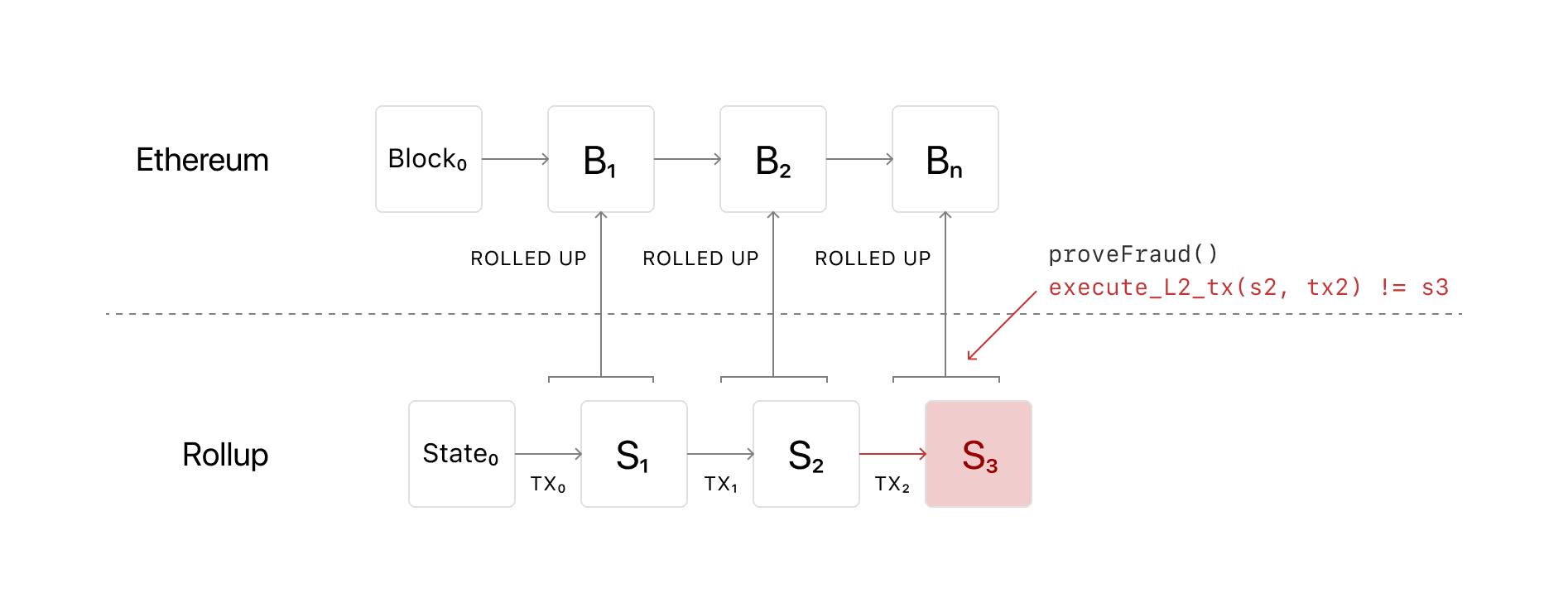
Zero-knowledge proof - In cryptography, a ZKP is a method by which one party can prove to another party that a given statement is true while the prover avoids conveying any additional information apart from the fact that the statement is indeed true.
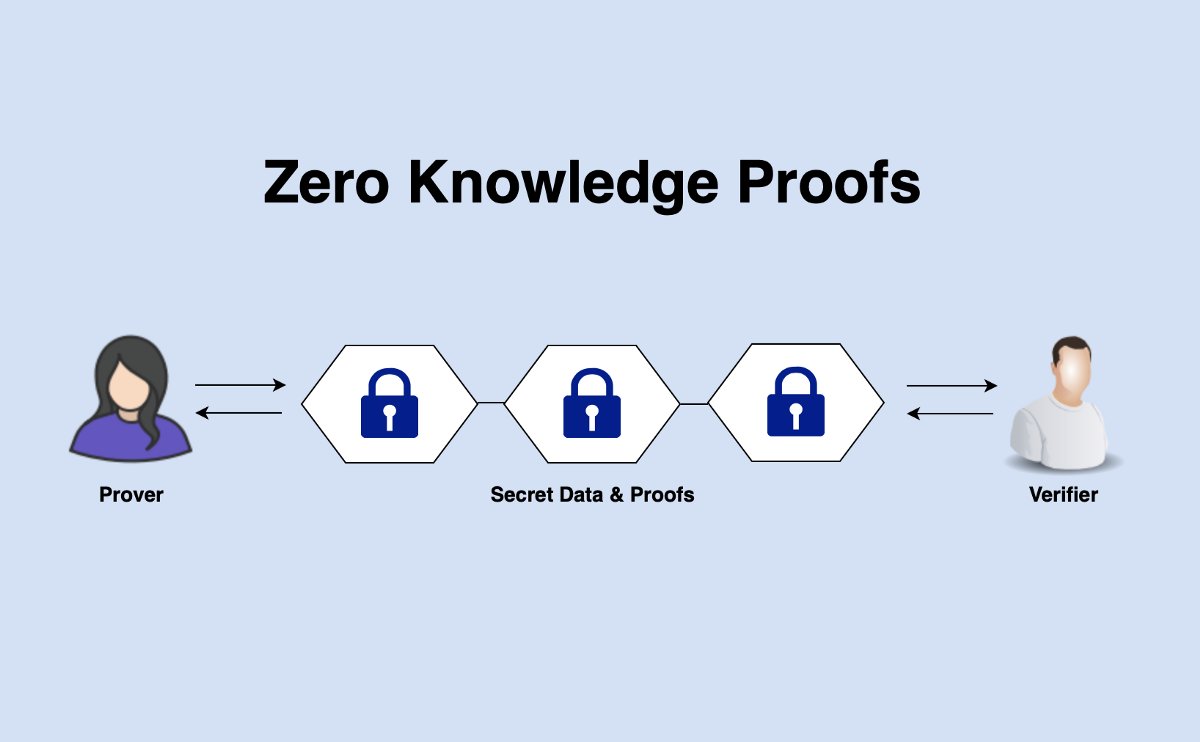
ZK Rollups - ZK Rollups are another kind of $ETH scaling solution that takes txs off of the $ETH chain.
ZK rollups generate cryptographic proofs that prove validity of transactions. Each batch of txs contains its own validity proof which is submitted to the main chain.
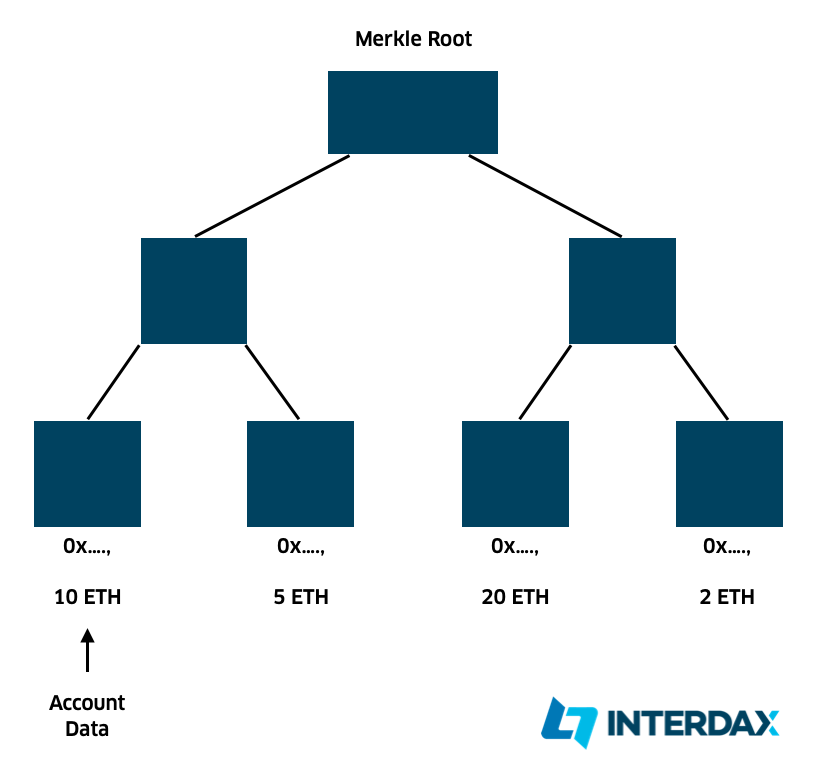
Keepers - Keepers are a class of externally owned accounts that are incentivized to perform an action in a DeFi protocol.
Keepers receive a reward in the form of a flat fee or a percentage of the incented action. (Ex. A keeper receives a fee for liquidating collateralized debt).
Beacon Chain - The beacon chain is an upgraded version of $ETH that will eventually replace the legacy $ETH blockchain currently in use.
Its purpose is to introduce a new consensus model known as PoS & coordinate an expanded network of shards & stakers.
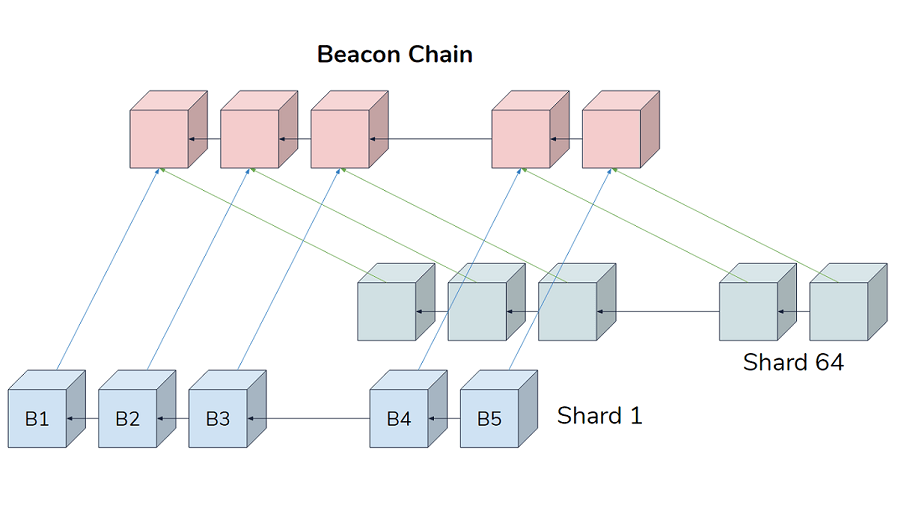
The Merge - The merge is the term being used for what will happen when Ethereum's mainnet, which runs on PoW, integrates with the Beacon chain, which is a PoS chain.
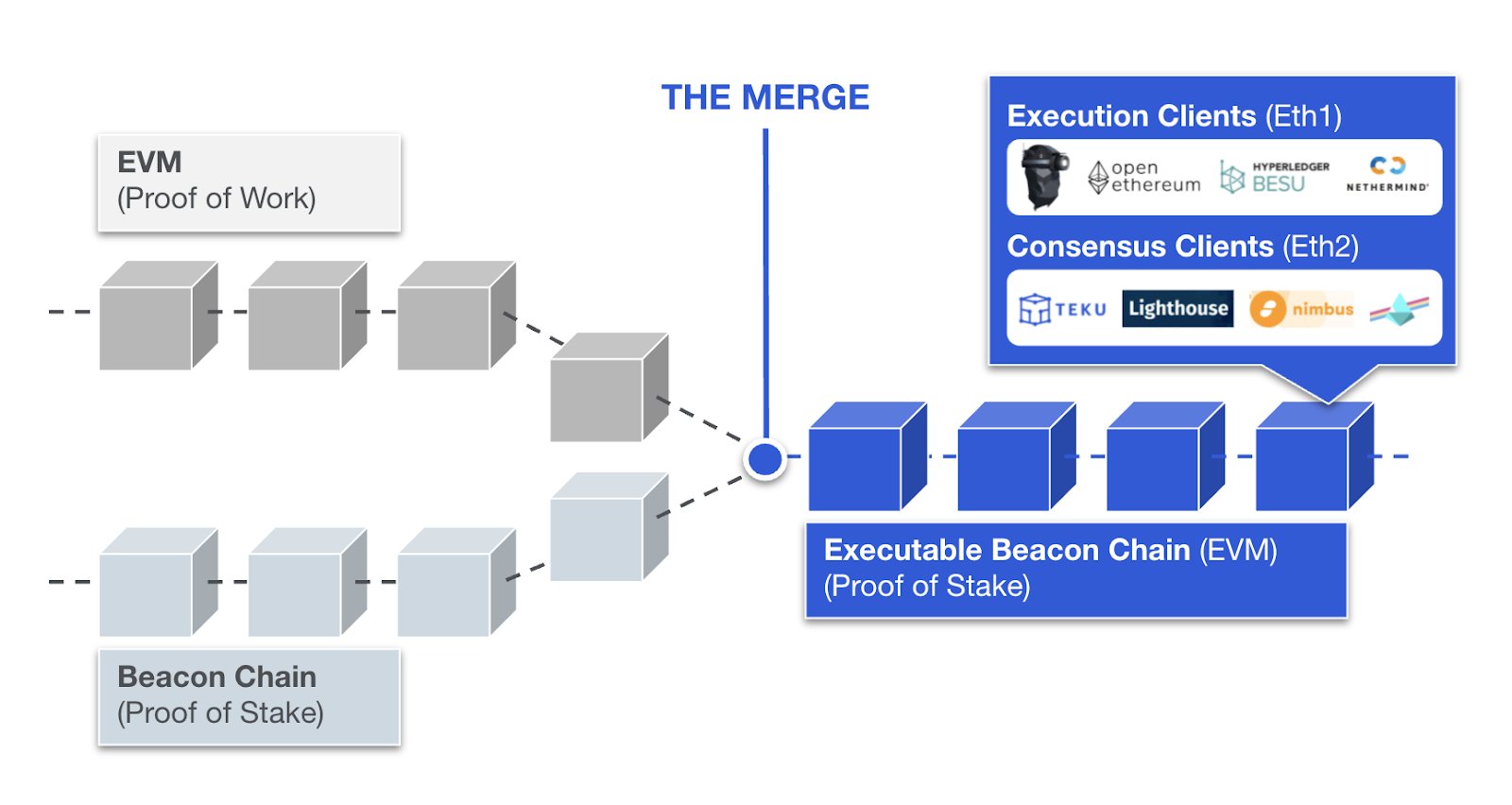
Tier 5:
Here we see the most perplexing and arcane level of our crypto terminology resource which brings you the most obscure ideas to be found about blockchain technology and cryptocurrency. These concepts are discussed and understood by the most elite blockchain participants. If you’re familiar with these, you might just be a crypto wizard!
MEV - Maximal Extractable Value (MEV) refers to the measure of profit a miner can make through their ability to arbitrarily include, exclude, or re-order transactions within the blocks they produce.
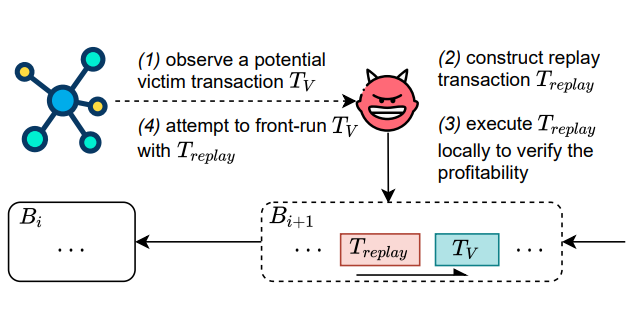
Sharding - Sharding refers to splitting the entire Ethereum network into multiple portions called "shards".
Each shard would contain its own independent state, massively reducing network congestion and increasing transaction throughput for Ethereum.
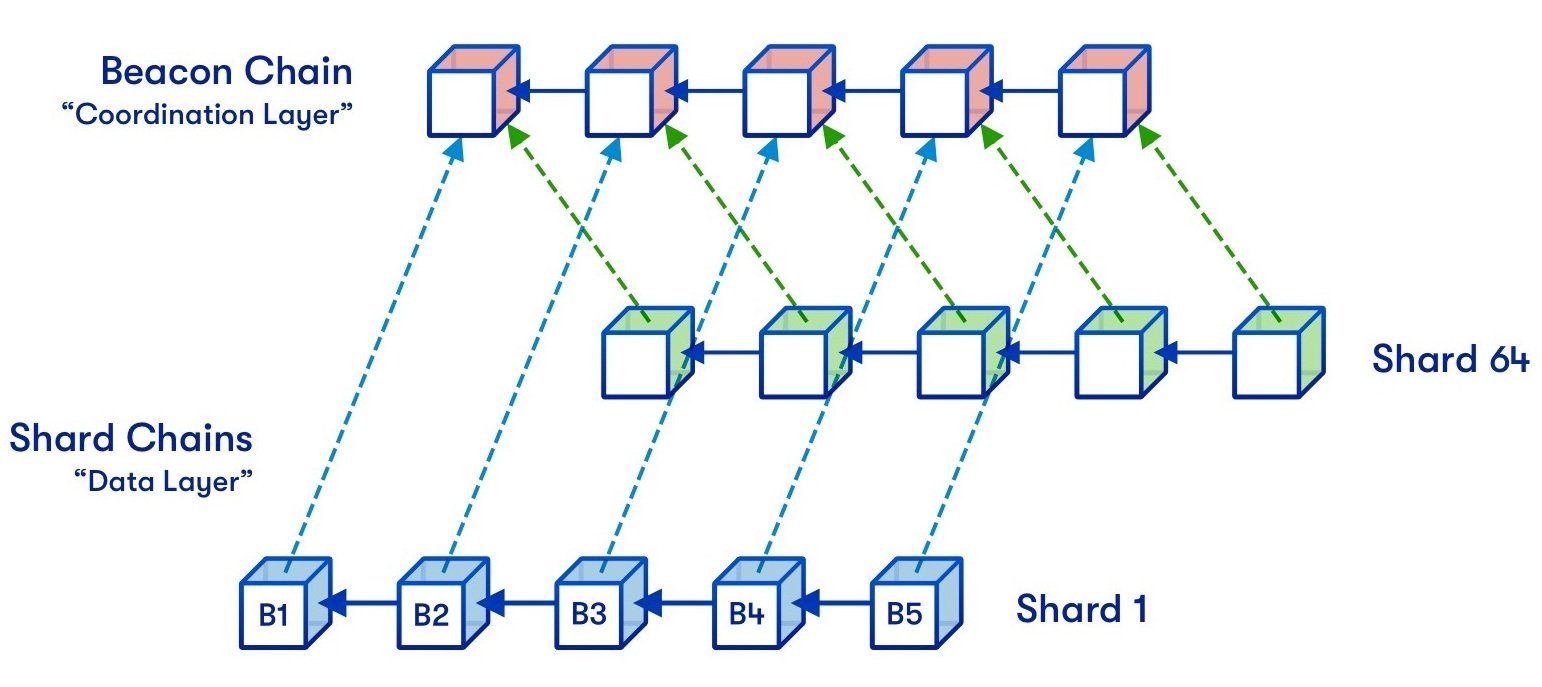
Data Availability Proofs - Data availability proofs are a new technology that allows clients to check with very high probability that all data for a block has been published, by only downloading a very small piece of that block.
Merkle Trees - A Merkle tree is a fundamental part of blockchain technology.
It is a mathematical data structure composed of hashes of different blocks of data, and which serves as a summary of all the transactions within a block.
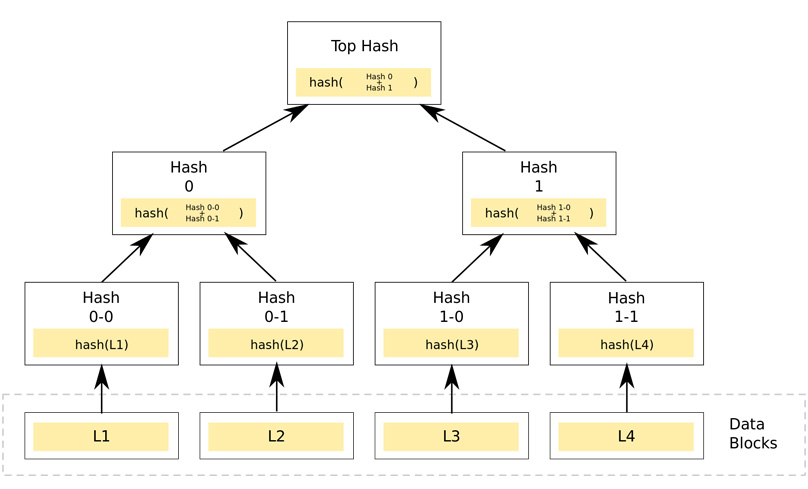

.png?width=1563&height=661&name=Logo%20-%20Color%20(1).png)



